|
29th July 2021 Thursday is here and it's time for some gaming on Board Game Arena. If racing isn't your thing but rolling is, then maybe you'll prefer Roll for The Galaxy to the excellent Race for The Galaxy. Roll for The Galaxy is a follow up to the aforementioned game and both are thematically similar. Both games have the same 5 phases (Although not in the same order!) and both are about are about building settlements and developments to create an engine building tableau in order to win. Mechanically, there are numerous differences though. Roll for The Galaxy uses lots of different dice and dice rolling to manage phases as well as provide workers to build with. Gone is the card-based economy of Roll for the Galaxy. What's in a game?
All the games tiles are made of sturdy grey board and are suitably thick. The currency meeple is a nice little wooden token that matches colour with a dice cup, speaking of which, the cups are made of pretty standard plastic but are easily tough enough to stand up to repeated use. Finally, the victory tokens are made of standard card token chips and are probably the most average component in the game, which is to say the components are all good quality. Anyone familiar with Race for The Galaxy will recognise the art style on the tiles. How much of it is new and how much is recycled from Race, I couldn't say. Ultimately though, it's fairly good artwork. How's it play? Setup
Roll for The Galaxy is played out over 5 different steps, each player carries out each step simultaneously.
Endgame Play progresses until either a player has completed the 12th tile in their tableau, or the supply of victory point tokens has been depleted. Players now calculate the total cost/value of completed tiles in their tableau and victory points accumulated, furthermore; some developments will have criteria that score players additional points. All points are tallied, highest score wins. Overall
Players of Race for The Galaxy (Like me!) will recognise a lot of familiar theme and ideas in Roll for The Galaxy, it's quite clever how this has been achieved, although there are some differences. For example; in Race for The Galaxy, a player's hand is also their currency, in Roll for the Galaxy though, players have no hand. The game introduces a currency track to replicate this and at first I thought it felt a little superfluous, after all, currency is only used to recover dice from the Citizenry space, then I realised without the need for currency, the decision to choose between a game tile and currency in the Explore phase becomes unnecessary as does the decision to to choose between victory points and currency in the Ship phase. There is no military score, instead military dice provide extra opportunities to develop and settle. Curiously, Roll for The Galaxy swaps the Produce and Ship/Consume phases round and trading is now the 5th and final phase. I guess that this decision was taken to make it a little easier to players to produce and then trade goods in the same round? Additionally, because Roll for the Galaxy is a 5-player game, it possible for all phases to be activated. It's never been possible to activate more than 4 phases in Race for The Galaxy. Finally; constructing developments and settlements is quite different: In Race for The Galaxy, it's a all-or-nothing affair, either you have the cards to pay for a development/settlement or you don't. Roll for The Galaxy allows player to incrementally pay for them, however, this ties up dice in construction, as a consequence players will have less dice and therefore less choices When rolling at the start of the round. But enough of talking about another game, let's talk about Roll for The Galaxy. In Roll for The Galaxy, players will be to some extent at the mercy of the dice they roll at the start of a round. If you're looking to finish constructing a settlement and you get no settlement dice - tough luck! Obviously there are rules to mitigate some of this and furthermore, correct usage of the different types of dice (Provided you get hold of them.) at the right time can be helpful and skew results in a player's favour. But on occasion, players will have to react to dice rolls that just don't go their way! Adaptation is the key here. Even so, it can prove frustrating at times when you can't do what you want to. Additionally, acquiring certain types of dice which may push players into strategies they hadn't considered before, Another aspect to remember when assigning dice, is to pay attention to what other players have been doing, successfully anticipating another player's choice of action can prove useful and provide extra actions to spend. Players must balance the need to acquire developments and settlements with the need to produce and trade, this also means balancing the use of limited resources to construct improvements with the need to have actions. Building an engine is vital, getting the special abilities provided is important, but so is acquiring extra dice to roll, which gives players more choices elsewhere. Players will want to do all of this as efficiently as possible to outpace their opponents In short; Roll for The Galaxy always provides players with meaningful decisions. I'd happily play Roll for The Galaxy again in the future, but given the choice between this and Race for The Galaxy, I'd choose the latter every time. Roll for the Galaxy is a good and fun game but I sometimes find the randomness off putting. If dice games are your thing over card games for some reason, Roll for the Galaxy is definitely worth a look.
0 Comments
28th July 2021 We were at The Sovereigns in Woking on a Wednesday for an impromptu evening of gaming. It's a Wonderful World, where you can lead a idyllic, tranquil life, except It's a Wonderful World is anything but! It's a dystopian, industrialised future in which competing factions vie for resources to create the most powerful empires. It's a Wonderful World indeed. What's in a game?
The development cards contain quite a lot of info, but the iconography is consistently clear and they never feel cluttered. The art used throughout the game is consistently good, colour is also well used, making the game bright and eye catching. It's a bit of a shame that when development cards become stacked, the art is no longer visible. so a thumbs up for the presentation. How's it play? Setup
On to play. It's a Wonderful World is played over 4 rounds and each round has 3 phases, drafting planning and production. The planning and production phases occur simultaneously and have no turn order
Endgame Once the 4th round has been completed, player calculate their scores. Some cards will provide a straight victory point score. General/financier tokens provide a victory point each. Finally, some cards have scoring combos dependant on other cards or the general/financier tokens. Points are tallied, highest score wins. Overall
It's a Wonderful World is fairly straightforward to learn and play, in truth, having to collect resources 5 times over in a round actually sounds a lot more fiddly than it is in practice. The game's engine-building, tableau-creating, simultaneous-play, card-game style has some similarities to some other games we've played such as Race for the Galaxy. While it has less depth, it's also more accessible, players will have less trouble creating engines and combos. The game also has a slightly different take on some of these concepts. Firstly there's drafting; what's interesting here is that players put cards they've drafted into their area face-up during the drafting phase face-up for everyone to see. In high-level play, it's possible for players to try and anticipate what their opponents might be looking to use and keep cards they might want from them. Fairly frequently in games (Especially euro-games.) a player trying to screw over an opponent can also screw themselves over, but in It's a Wonderful World, development cards can always be discarded for resources, so sometimes in can be a legitimate move. Secondly; how the timing of resource acquisition meshes with the game's engine building mechanic is interesting and presents an unusual approach to exploiting those engines. For example; if a player completes construction of a development card that required grey cubes, that card goes straight into their empire's stack and if that card then produces black cubes, then the player will get those cubes when the black resource production phase comes round and they can then be used to complete development cards which require black cubes. Knowing when to complete which development card and in which order will greatly increase the building efficiency of an empire. Many engine-builders allow players to do a the perform a wider variety of tasks but the simpler gameplay of It's a Wonderful World has a clear and concise gameplay loop, constructing development cards allows players to gain more resources to construct even more development cards to get even more resources and so on. In round 1, players will probably end up discarding 5 of the cards they drafted for the resources to try and build 1 or 2 of those development cards. This puts players in the classic quandary of deciding what they have to discard and all the cards will be useful in some way. By the time round 4 arrives however, it'll probably be the inverse, players will be discarding only 1 or 2 cards to try and build 5 in a round as their engine gets stronger and stronger. It's a satisfying experience to watch it at work. All of this adds up to make It's a Wonderful World feel different enough to justify it's existence. If you like this style of game, it's definitely work a look, I do and I'd happily play it again. 13th July 2021 It's a Tuesday evening and I'm at The Sovereigns in Woking with the Woking Gaming Club. Where would eurogaming be without Renaissance Italy? The pageantry, the politics, the scheming and the vying for power, you know how it goes: A seemingly limitless mine of game design opportunities. This is where Lorenzo il Magnificio comes in, a game where players control noble families in Florence competing to be the most prestigious, famous and of course.... most pious! What's in a game?
The boards and tiles are suitably thick, the resource cards are of a standard quality as you'd expect. Tokens are all made of wood, which I always like, including the nicely rounded dice. The standout components however, are the family workers, instead of discs, they're these tall cylinder shapes that are easy to pick up. It makes sense as I'm sure they're going to be the components that get handled the most; practical and appealing. Lorenzo il Magnificio features attractive artwork throughout, the boards all display pretty, somewhat stylised art work cleverly produced to incorporate all the game's worker spaces. Art on the cards is little pared back to make room for iconography. Talking of which, all the game's symbols and text was easy to read. Lorenzo il Magnificio has good, solid components and presentation. How's it play? Setup
Lorenzo il Magnificio is played over 3 periods, with 2 rounds per period, which equates to 6 rounds in total. Each round has its own setup phase before the players act in turn order, additionally at the end of every period (2nd, 4th and 6th rounds.) there's an additional step; the Vatican report step. A round progresses as follows:
Endgame Calculate points from the following: Current score plus points for acquired territory cards and character cards, end-of-game victory points for venture cards. The player with the highest military score gains an additional 5 victory points, 2nd highest acquires 2 extra victory points. Finally, every set of 5 combines resources scores an additional point. All points are tallied, highest score wins. Overall
Lorenzo il Magnificio sits towards the heavier end of games in my opinion, mechanically speaking, at it's core it's not a particularly complex game, but there's a lot of exceptions and variations to consider when trying to buy those all-important development cards and managing faith and military scores and the resources required to do all this. Don't forget those 2 engines you'll need to build either in order to gain and change those resources, or the abilities that character cards confer or the endgame points that venture cards grant. Like I said, a lot to think about. The game uses 4 types of resource and 3 types of score (Two of which can also be spent at times.) and mixes a few types of game mechanics; there's a bit of worker placement, a bit of engine building and a bit of resource management. Where it throws a spanner in the works though, is the use of dice to randomise the value of workers. A couple of low rolls can force players to change their strategies, particularly when competing for development cards, however, the use of servants can potentially mitigate low rolls, even so, players will have to adapt to circumstances. Furthermore, players have relatively limited moves to play with, each player has 4 workers they can use over 6 turns, giving 24 placements in total, which is why building the engines that essentially get triggered for free is so vital. Synergy and move optimisation are also key to this game. There are several approaches to scoring points in Lorenzo il Magnifcio, although these strategies are down to which development cards are acquired, development cards are the game's most vital element to winning and most actions are in service of getting those cards. However, the game seems a fairly well balanced, nothing felt overpowered or unimportant, decisions always felt meaningful and because of limited moves, these decisions generally felt tricky. If I had one criticism of the game; it's the excommunication tiles, they feel negative, but I guess that's the point of them. If someone wanted to play this, I'd have no qualms joining in. It's not one of my favourites, but it's still enjoyable. If you have a hankering for a heavy-ish worker placement game set in Renaissance Italy, you'll probably like this. 30th June 2021 It's a Wednesday and we're round Simon's for some gaming. Star Trekkin' across the universe, On the Starship Enterprise under Captain Kirk. Star Trekkin' across the universe, Only going forward 'cause we can't find reverse. This sort of sums up Space Base in a roundabout kind of way, a game about launching spacecraft into space, only for them to disappear into the void and never return, well except for the victory points and money they sent your way! What's in a game?
As you'd expect, all the components in Space Base are of a good quality; the player boards are sturdy and the plastic dice, while not as nice as wooden ones, are nicely rounded and roll well. The cards are also good quality, it's understandable that they were made half-width, otherwise the game would have a massive footprint! A lot of the ship cards have special or unique rules and their iconography is mostly easy to comprehend. The little acrylic cubes are colourful and distinct, while the dice have a 'cosmic' sparkly finish and the '1' result has been replaced with a rocket. The ship cards all contain a varied amount of detailed and neat, colourful illustrations of spaceships, along with their names, designations and classes, some are just palette swaps, but that's OK. It's unfortunate that these illustrations are so small though, as they tend to be overlooked. A nice touch is how the background art on the cards matches the background art for their sectors on the player board. Ship cards are also marked out in bright blue and red, while the colony cards are bright yellow and it all combines to give the game a distinct and overall, eye catching look, it's a great use of primary colours. How's it play? Setup
On to play Thematically, as the name suggests, this is a game about managing the spaceships docked at the titular space base, which I guess makes the players glorified intergalactic space traffic wardens! Collect those parking fines! In Space Base, a player's turn is broadly divided into 2 stages, rolling dice and activating cards, then buying a card.
Endgame Play progresses until a player reaches 40+ victory points, then the current round is completed so all players have had an equal number of turn. Victory point scores are tallied, highest score wins. Overall
Space Base is a bright and cheerful, well made game that at least initially, is a lot of fun to play and gives players lots of options. The idea of beginning a game with an already built up tableau is a good one, it means that the active player will always gain something on their turn and it's never wasted. It's also a fairly accessible game and the basic rules are easy to learn; roll and choose dice, activate the relevant cards and buy more cards. However, the game does become a lot more complex when more cards come into play, many cards allow the players to shift which cards are activated or purchase more cards, or have charge cube based abilities and so on, some of which can prove confusing. Being able to split or combine the dice roll when activating cards is an intriguing rule and superficially give players a couple of choices on how to play their actions and build up their tableau. Splitting the dice gives the player the option of activating cards in the 1-to-6 range twice instead of once in the 7-12 range, however, balancing means that the cards in the 7-12 are more powerful, giving greater gains. Should a player choose lower gains more often, or greater gains less often? That's the theory anyway. Let's look at how this might work in practice. The chance of rolling a 12 or double 6 is 1/36. the odds of rolling a 6 on 2 dice is 1/3, which means activating a 6 is 12 times more likely than activating a 12. However thinking about further, a 6 would activated twice when a 12 is activated, taking the ratio up to 13. Thinking about it even further, I realise that a 1+5, 2+4, 3+3, 4+2 and 5+1 give 5 more ways to activate 6, taking the ratio up to 18-1! Does the 12 sector generally gain a player 18 times the benefits of sector 6, It doesn't feel like it? I've scrutinised the manual and the developers are aware of all these odds (Although they discount a double-result as an extra activation), so it must be as designed. Why is this important? It's all to do with which cards a player deploys and how the rolled dice are used. Even taking balancing into account, it seems that deploying cards in sectors 1-6 seems much more beneficial than 7-12. Once a player has covered all first 6 sectors, it means they're guaranteed 2 actions per other player's turn, whereas there's no such guarantee of even 1 activation for sectors 7-12. Even partial coverage seems much more beneficial. It becomes more apparent when you play with more players, in a 5 player game, it'll get you 8 activations between turns! At the time of writing, we've played Space Base over half a dozen times or so and for the last few games, I've concentrated only buying cards for sectors 1-6, not worrying too much about what benefit it gives me, only looking to increase my deployed cards; and it's been more successful than not - so far! It's possible I was lucky to get the cards I wanted, but realistically half of the cards must be for sectors 1-6, so they'll generally always be available. Or it might just have be some lucky dice rolls going my way, or they didn't go well for the other players? Ultimately, it seems to be that buying and deploying cards to stack up in sectors 1-6 seems like a bit of a no-brainer decision to me, which can be bad for a board game, because if that's the case, it removes meaningful choices. Having said that, it's not something I'm 100% sure about and I'm still enjoying Space Base, I found a lot to like about it, rolling the dice and seeing what it gives you is always fun. It's a game I'm happy play again when it comes up. 24th June 2021 It's a Thursday evening and we're round Simon's for a couple of games. The first game of the night was Paper Tales. As the name implies, create the tale of building a kingdom and warring with your neighbours over 4 generations or in Paper Tales' terms - 4 rounds! What's in a game?
The quality of the game's components is to the usual standard as you would expect, which is fine. The building and unit cards feature some bright, colourful and stylised artwork which I found quite charming. How's it play? Setup
On to play Paper Tales is played over 4 rounds and there are 6 stages to each round. Other than the drafting in the Recruitment stage, each stage is played simultaneously by players
Endgame Play continues until 4 rounds have been completed. Then players then tally their victory points on the score board with the victory points on their constructed buildings. Highest score wins. Overall
So, Paper Tales is something of a curious beast. It feels like a deliberately small scale game that merges a little bit of card drafting, a little engine building and card combo mechanics with a little bit of resource management. The game broadly presents 2 routes to scoring victory points. Using unit cards with high combat values in war can theoretically score a player 24 victory points and in a game if this scale, that can be a sizable score. The other way to generate victory points is from the abilities that unit cards may possess, maximising the usage of those abilities can require careful consideration. It's also a somewhat challenging game, not that this is a bad thing. That's because when playing Paper Tales, it never feels like there's enough gold to deploy all the cards you want or enough turns/resources to construct buildings you want. There's 5 buildings to construct and only 4 turns, and that's not including upgrades! It's worth noting that decisions made in the 1st round may have a significant impact on options and decisions in the final round. Players are forced to make tricky, meaningful decisions, which is always good. The aging mechanic is unusual and represents the transitory passage of time and is something players need to watch out for, those unit cards are only around for 2 rounds! However, there are also ways for a player to exploit this mechanic to their benefit with card abilities. For a game that only gives players 4 or possibly 5 cards to work with, there's quite often a combo that can be created. Paper Tales has in terms of rounds a quite short playtime, yet somehow feels a little fiddly for a game of this scope and the handful of times we played it, the short playtime made the game feel a little unsatisfactory. It's all about maximising resources and exploiting card combos, but as I said above, because it's a challenging game, it can be hard to optimise your strategies in early plays, i.e., it has a steep learning curve despite it's apparent simplicity. That's not to say it's a bad game, because it's not, but it sits towards the heavier end of a what might be considered 'light' or 'filler' game in my opinion, which is considering what I'd consider it to be. I'd have no reservations about playing it again. It's worth a look, but I think it needs playing at least a couple times before passing judgement on it. 23rd May 2021 It's a Sunday and I'm logged into Skype and Board Game Arena, ready for an evening of gaming. The first game of the night was Happy City, a cheerful looking, light engine-building card game about building up a city, a happy city no less. Caveat: We've only played this game digitally on Board Game Arena. What's in a game?
Symbols are clear and easy to read. How's it play? At it's core, Happy City is a tableau-building game, adding cards increases income or score. Setup
In Happy City, the starting player's first turn is slightly different to subsequent turns, as explained below.
Expert game Happy City has 2 levels of play; family & expert. This blog describes the family version. The expert game differs in 2 ways. All the happy market cards are flipped to their differently coloured sides and laid out, then the players draft one to become the starting card in their tableau and giving them some choice in how they start the game. Special buildings also differ; the family Special cards give players a boost to their income, happiness or population. The expert special cards however, are different, they confer different benefits, sometimes variable and situational. Endgame The game continues until a player has 10 cards in their tableau, upon which the current round continues until all players have had an equal number of turns. Each player's score is calculated by multiplying the total value of happiness symbols in their tableau by all the population symbols. Highest score wins. Overall
Gameplay in Happy City gives players the choice between increasing income or accumulating happiness/population. Income will give the player more buying power but happiness/population contributes towards the end score. Having 3 decks of building cards at different cost ranges is an interesting mechanic when it comes to drawing cards. The player will always have the option to draw 1 or 2 cards, higher level cards will be better, but may prove more risky to draw. E.g., If a player has 4 coins, drawing a level 1 card will be safe as level 1 cards only cost 1-3 coins each, level 2 cards cost 4-5 coins, so there's a risk that a level 2 card will be unaffordable and will have been drawn pointlessly. It can give players a quandary when drawing building cards. The game's scoring mechanic also adds an extra layer to decisions, failing to pay attention to how the points are spread between happiness/population can lead to lost scoring opportunities. While Happy City is simple to learn, enjoyable and fast to play, making it a good filler game, it's perhaps also a little too basic for dedicated gamers. After a few games it was fairly easy to spot an optimal strategy to pursue and it became a race to develop that strategy. So I feel that the game doesn't offer a lot of longevity. Ultimately, because it's such a light game, it's probably a good game for families or more casual players which is probably who the game is aimed at. We also played the expert level a few times but felt like it added little to the game. The varied happy markets are nice and offered a little extra strategy but the expert level special cards weren't so good. The problem was that they seemed harder to acquire than the family special cards, which meant they were acquired later in the game and therefore their benefits were limited, we found it wasn't worth specifically trying to get one, getting one by happenstance was fine, but then that sort of makes having a choice of starting happy market card pointless. We enjoyed the family version more. The family version is a game I'd play, but not too often. 24th March 2021 It's a Wednesday evening and I'm logged into Zoom and Board Game Arena on my PC. It was time for a game that spanned the ages and the creation of massive monuments and the civilisations they represented. Luckily, it doesn't take that long to play 7 Wonders! Caveat: We played the game online but have previously played the physical copy. Photos were taken for this blog post. What's in a game? The purpose of the game is for each player to create their own civilisation through the construction of various types of buildings and ultimately create one of the 7 Wonders of the Ancient World. 7 Wonders is card game played over 3 sets of rounds (or ages). Each age has its own set of cards which are used. There are numerous types of cards, some of these types can be more or less common in different ages.
The text and icons are all mostly clear (I tended to confuse stone and ore icons, because the ore icon looks like a pile of stone to me.), the symbology used for special rules on cards is also generally clear, the rulebook does a good job on clarifying these in cases of confusion. I also like how the layout allows cards to be more or less stacked while still displaying pertinent information. In terms of art quality, the wonder boards are quite large and very nicely decorated in eye-catching illustrations of the 7 titular wonders. Art on the cards are of a similar quality but obviously on a smaller scale. How's it play? Setup 7 Wonders is a 3-7 player game but also contains some special rules to allow 2 player games. This blog post talks about the normal 3-7 player game.
On to play Each player in 7 Wonders is neighboured by a player to their left and right; why this is important will be explained below. Each player takes a card from their hand and plays face down in front of them, then they pass the remaining cards clockwise to the next player, the direction of play alternates between rounds. Once every player has chosen a card, all player then simultaneously reveal their card, plays it and executes one of the 3 actions below.
Once all players have completed their action, everyone picks up their new hand of cards and play continues as described until all players have used 6 cards each, the 7th card is never used and is discarded out of the game. The game has reached the end of the round, now conflicts are resolved.
Endgame Once conflict has been resolved for age 3, the game is over only scoring is left. Victory points can be scored from a variety of sources, once these are tallied, highest score wins. Overall
I'm going to nit-pick a couple of things about 7 Wonders. Set up feels a little long for a game that's quite short, having to sift through all 3 decks at the game start feels irritating, probably because there's 3 decks to construct instead of 1 and if the player count changes between games, then all 3 decks will need to be rebalanced. The game is quite involved and perhaps a little too complicated for its expected playtime. I found myself frequently forgetting the rule about chaining buildings Scoring is convoluted, specifically scoring the scientific cards where each symbol will scored twice. I wouldn't be surprised that more time was spent making sure this was correct than the rest of the scoring. Like other drafting games of this style, early in the game players will struggle to decide what's going to be important to them or not, but by looking at their wonder board, players will see what they need to build their wonder and what benefits it gives them as some guidance. One interesting feature about 7 Wonders is how players can pay to utilise their neighbours resources and goods and of course, players will want to keep and eye on their neighbours' military forces. It's a nice little spin that adds to the game. Since there are 7 ways to score points, players will have a lot of options on which strategy to pursue. For example, civic buildings give a lot of victory points, but nothing else. Military strength can score a lot of points (and cost your neighbours a few), but only if you dominate, getting caught in a war of escalation can be distracting and costly. Quibbles aside, 7 Wonders is a straightforward game to learn that has a quick turnaround and is a fun game to play, players will want to strategize, but the luck of the draw means they will need to adapt to circumstances. The game always provides players with meaningful choices, which is what you want. 20th October 2020 Tuesday evening in Woking at 'The Sovereigns'. Time for a boardgame with the Woking Gaming Club. Tonight's game was 'Ride the Rails'. Now Ride the Rails looks like a traditional railroad building game set in North America, but it has a few wrinkles that make it play a bit differently. What's in a game? Some of the components will seem familiar to any that's played a railroad building game
You may have noticed that I mentioned shares, but there are no components for shares and no money either. Well, more on that below... How's it play? Set up
Ride the Rails is played over 6 rounds. It's important to know that there are only 2 train companies (Red & blue.) available from round 1. The orange becomes available from round 2, yellow from round 3, purple from round 4 and black from round 5. No new companies appear in the 6th and final round. Additionally, each company has it's own rules for the placement of train meeples. A round consists of 3 actions, which all players will carry out.
Endgame Play continues until the 6th round has been completed. Final scores are tallied, highest score wins. Overall
As you can see, Ride the Rails is pretty straightforward and simple to understand, it also plays quite quickly. Don't let the simplicity fool you though, there is a fair a amount of depth here. Firstly; Ride the Rails has the classic dichotomy in which competing players may need to cooperate. If more than one player has spent a turn investing in a certain company, it's to both their benefits to expand that company efficiently. Being able to gauge which shares will generate the most points is vital to winning, if a player manages to get 2 or 3 shares (Out of their 6) in a rail line that will see a lot of use, they can potentially rake in a lot of points. If a player however invests too quickly in a single company, it can scare off players who might perceive they are helping another player too much. Remember, 2 players can build up a network much quicker than a single player. Secondly, building rail networks. In the first round, red and blue train meeples can only start in east coast cities and must more or less head west. Should a player create a meandering network that maximises connections? Or should they race towards the west coast? No single rail company can cross the entire map, it will probably take the efforts of 3 companies to do that and this will involve crossing the mountains. This means it's unlikely that more than 2 companies will connect the east and the west. Making this connection first can be very lucrative, it forces other players to either use the rail network you've got shares in, or waste time building a separate network and just like with shares, each player will only have 6 opportunities to build their network. I think that Ride the Rails is a good game, that has a lot of elements that will be familiar to experienced gamers but actually plays a bit differently. You buy shares, you just take them and you don't pay to expand a rail network, it just happens. There is no money in the game in fact, money immediately translates into points. I definitely want to try Ride the Rails again. 13th October 2020 Tuesday is here and we're at 'The Sovereigns' in Woking. Time for the Woking Gaming Club to play a game and tonight we will be playing 'The Networks'. This is a game for the budding media mogul inside everybody; create TV shows, hire film stars, fire chat show hosts, stick advert breaks everywhere, well at least during primetime! Fun for everyone. When we played The Networks, a couple of expansions were also used. What's in a game? The Networks is a card game that has some nice additional components.
All the other components are standard, except the money tokens which are cool. How's it play? Setup
The Networks is played over 5 'seasons'. At the start of each season, TV show, star and advert cards a dealt in 3 rows. Network cards are only dealt out from the 2nd season onwards. After this, in turn order, players take 1 action each. This continues until there are no more actions that can be performed or all players have chosen to finish for the season, this is called 'drop & budget'. The actions are:
Endgame The game continues for 5 seasons, at the end of the 5th season the shows are still aged. Then a 6th season is scored (No new cards or other actions occur). Accumulated audience figures are tallied, highest score wins. Overall
The Networks has some cool design choices that give players interesting decisions to make. A player can keep going and acquire more stars and adverts for as long as they've got money, which can give them an advantage later on because having these cards in their Green Room means that it's easier and quicker to develop shows. But ending your season early gives you more money/audience, more importantly though, it allows the player to be earlier in the turn order for the following season. So when the new cards appear, that player will get first dibs. Because the game is very much about card drafting, players really have to think about how they prioritize their actions, as all players will be vying for the same cards. Players have to try and use their actions as efficiently as possible, there's a fine balance between doing all the actions you want to do and ending your turn quickly. All in all, The Networks gives players important decisions to make throughout the game and that's a good thing. 10th March 2020 Tuesday is here and we're at 'The Sovereigns in Woking with the Gaming Club. The first game of the evening was 'Quacks of Quedlinburg'. Quacks of QuedlinBurg is not a game about ducks as I thought when I first heard the name. It's actually a push your luck game about disreputable, dangerous, deplorable and downright dishonest doctors. Actually YOU play the quacks in question trying to create the most amazing and wondrous potions. Amazing and wondrous that is, until they blow up in your face. What's in a game? Quacks of Quedlinburg has quite a few components, there is a game board and personal game boards. There are also tokens - and lots of them too, as they are the most important component of the game.
That the player boards look like pots, flask tiles look like potion bottles and ingredient tiles look like ingredient books shows that some thought, effort and care has been put into the their design. How's it play? Setup.
Quacks of Quedlinburg is played over 9 rounds and something new or different is introduced over several of the rounds.
When players are drawing ingredients from their bag. They can use their flask to return the token to the bag - provided they had not gone bust because of the token. Endgame Play continues normally until the start of the 9th round. The final round is a little different. When drawing a token from their bags, each player keeps the token in a closed hand and every player opens their hand at the same time. When a player wants to stop drawing tokens they simply keep their empty hand closed until it's time to reveal it. After that they drop out of further rounds of drawing ingredients. The phases for spending coins on ingredients and rubies on the droplet/flask are ignored because they are pointless at the end of the game. Instead; every 5 coins and/or 2 rubies will earn the player a victory point. After this, victory points are tallied, highest score wins. Overall
Quacks of Quedlinburg is a fairly easy game to learn and easy to play. It moves along briskly too as there's very little downtime and it doesn't outstay its welcome as it's finished after 9 rounds. When I played it, it felt like a lot was occurring in a short game time. Pulling ingredients out a bag to put into a pot is a brilliant use of the 'push your luck' mechanic. It fits the game perfectly and surprisingly makes it a lot of fun. Additionally; unlike most 'push your luck' games, going bust does not totally kill a player's turn, they still reap some of rewards of their potion making and they can still carry out most of the other actions. The engine building mechanic works well too, as players introduce tokens into their bags, it makes going bust a little harder, giving players longer more productive turns. Combined, the 2 game mechanics always gives the player meaningful and interesting decisions to make, when to and when not to push your luck? What ingredients to buy? And so on. I liked it and will definitely play it again. |
AuthorI play, I paint. Archives
March 2024
Categories
All
|

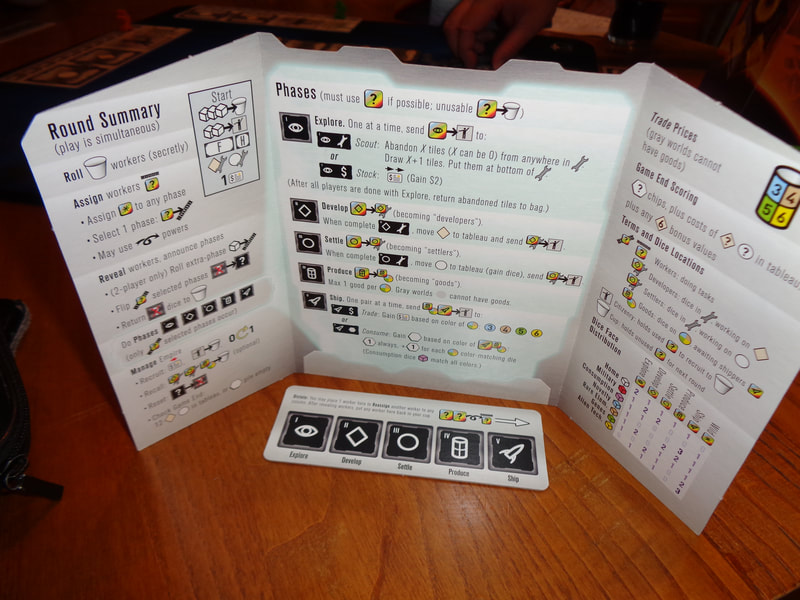
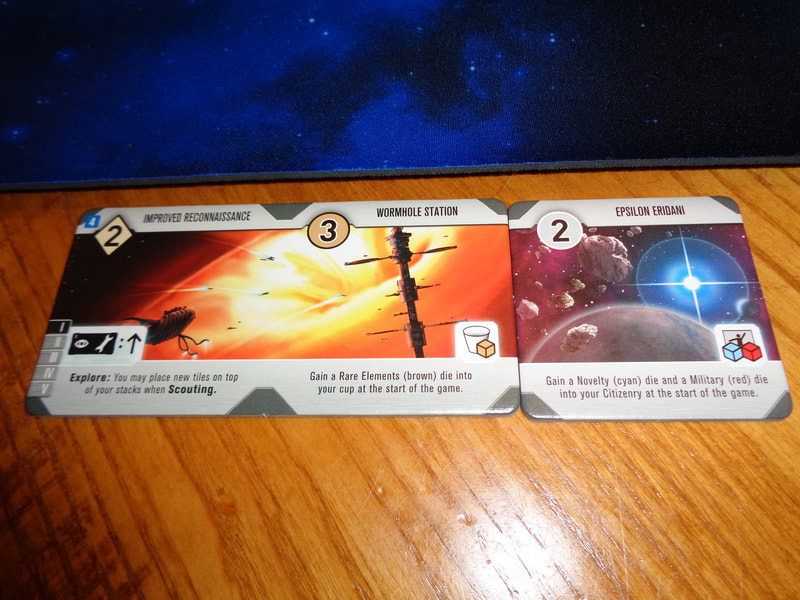
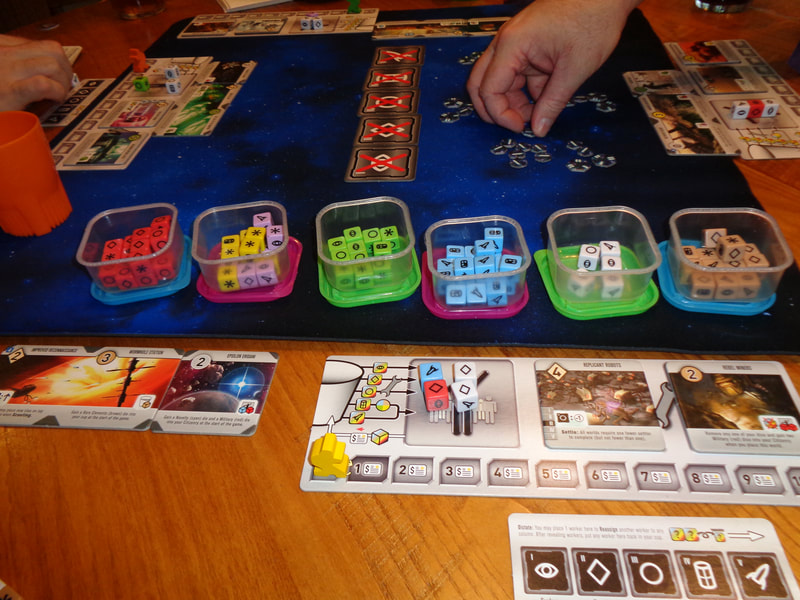
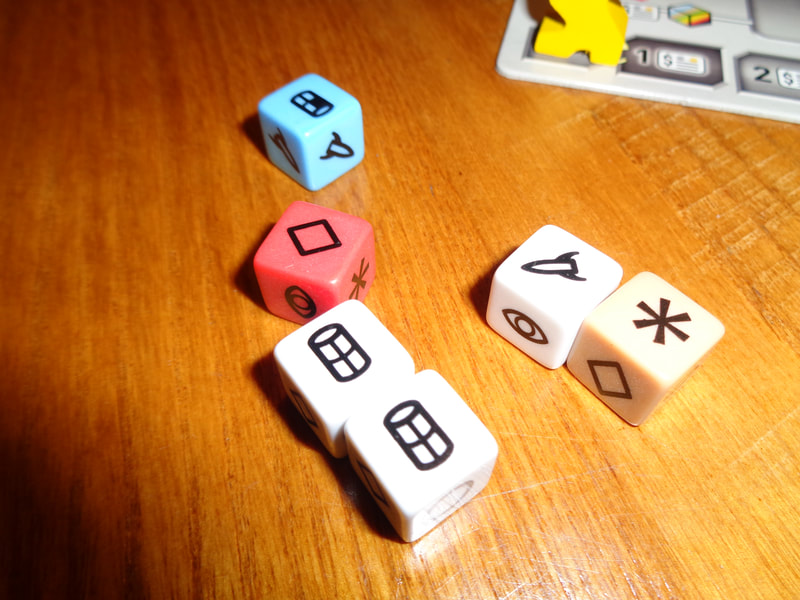
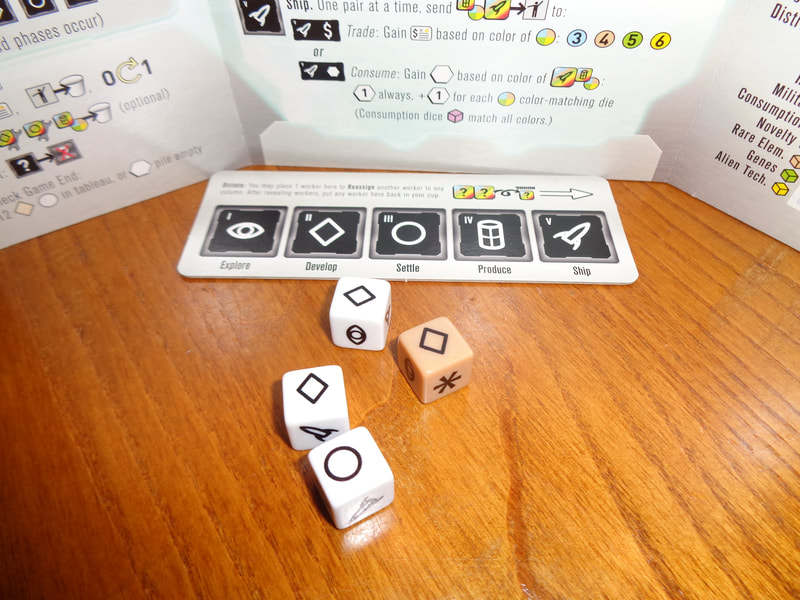
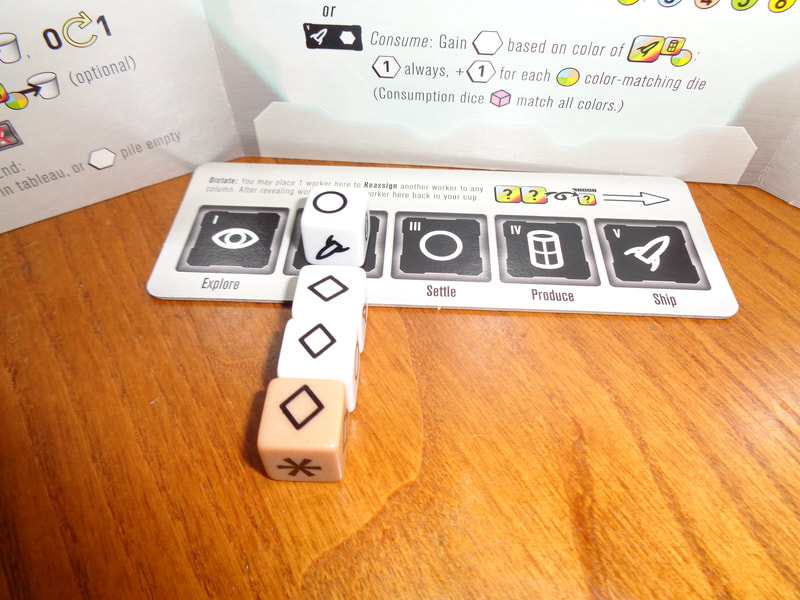
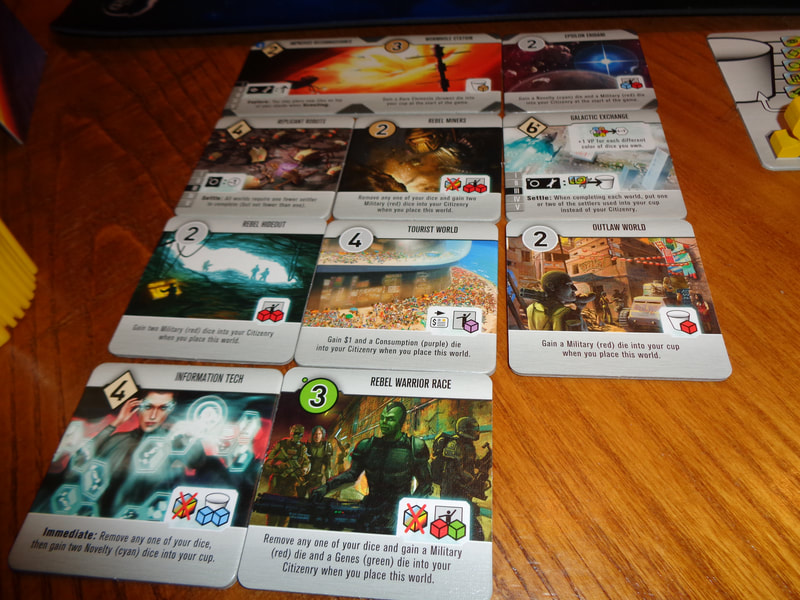
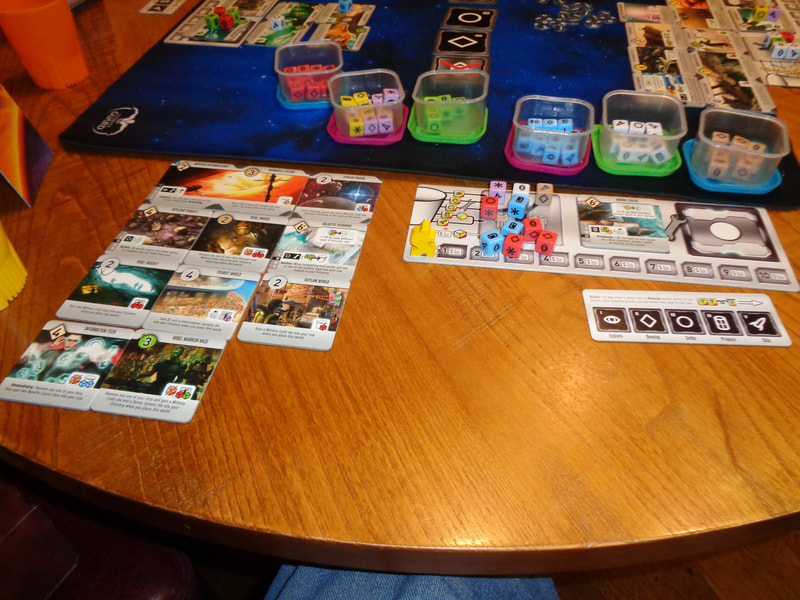
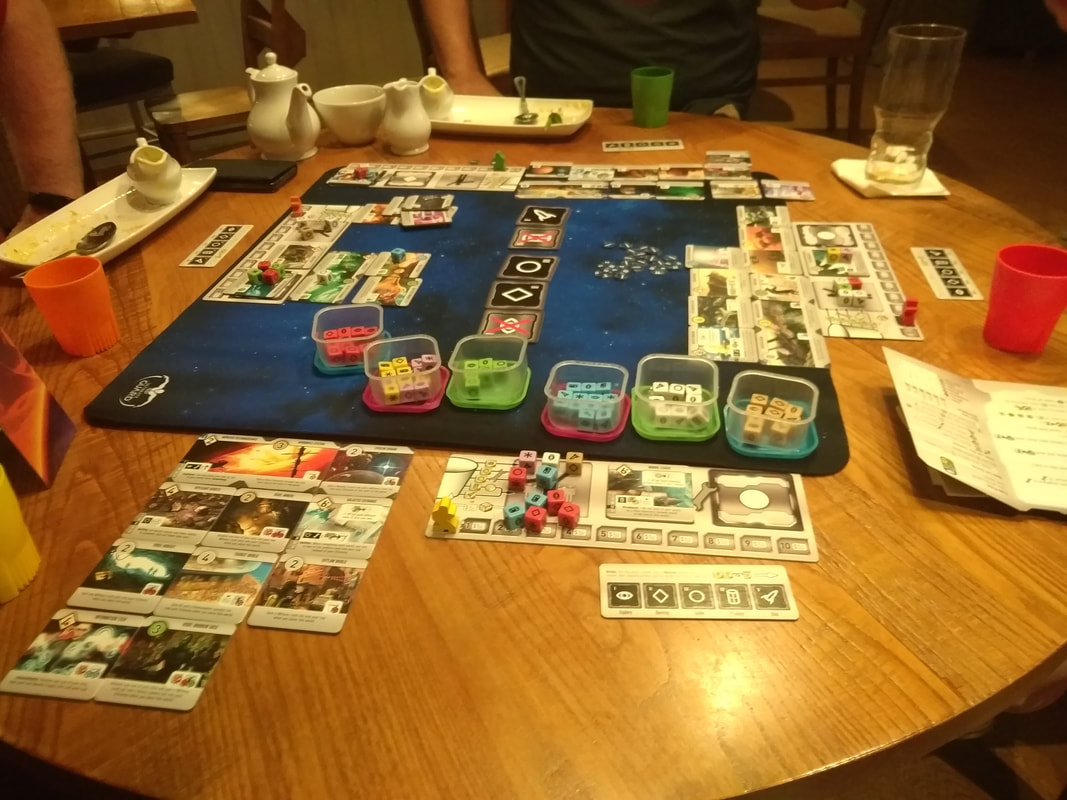
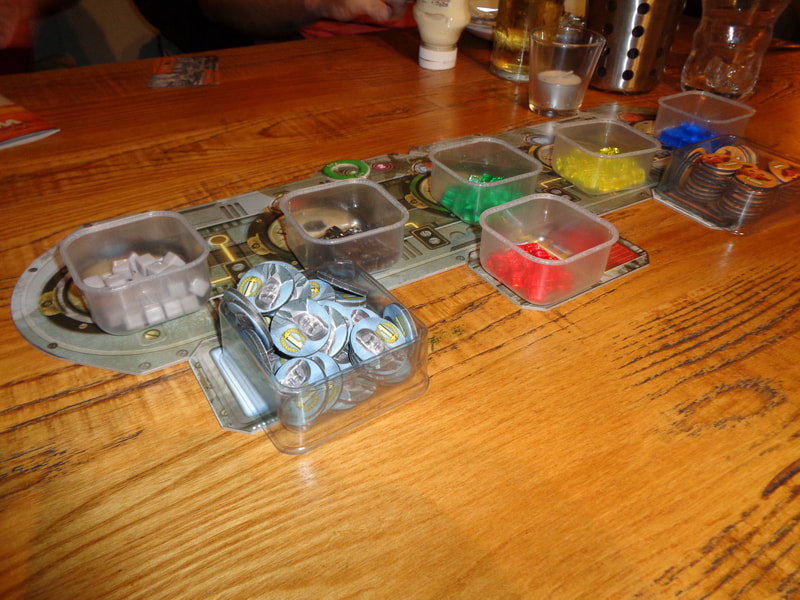
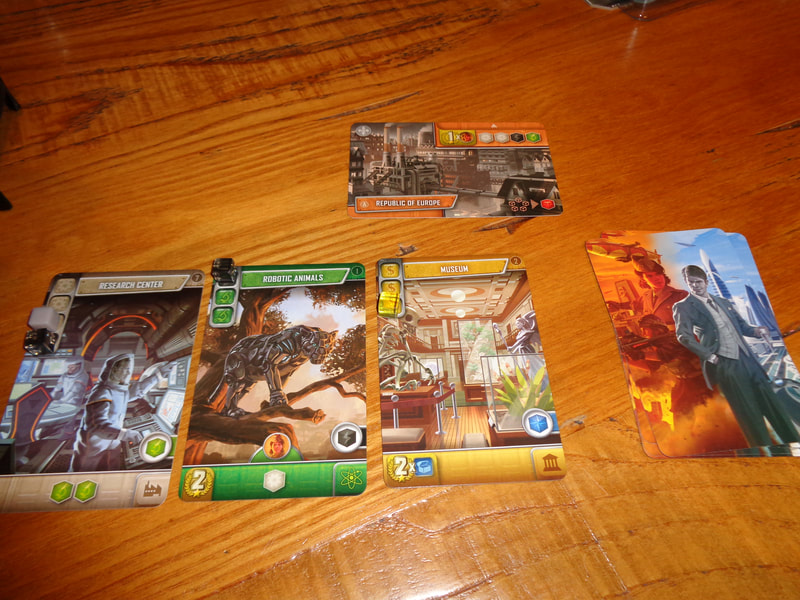
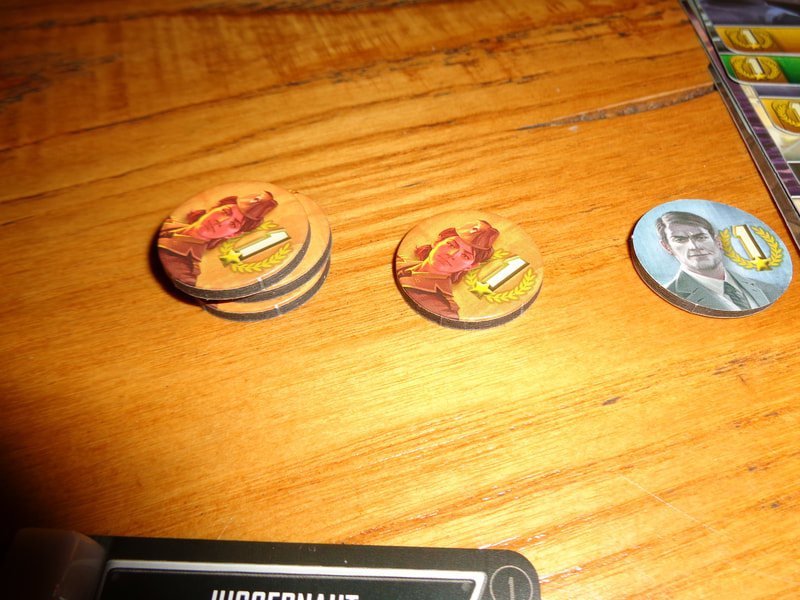
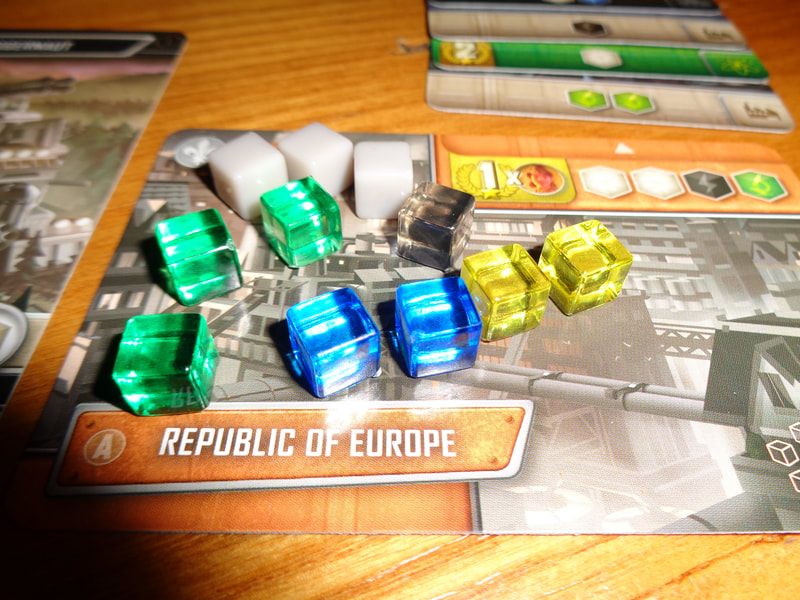
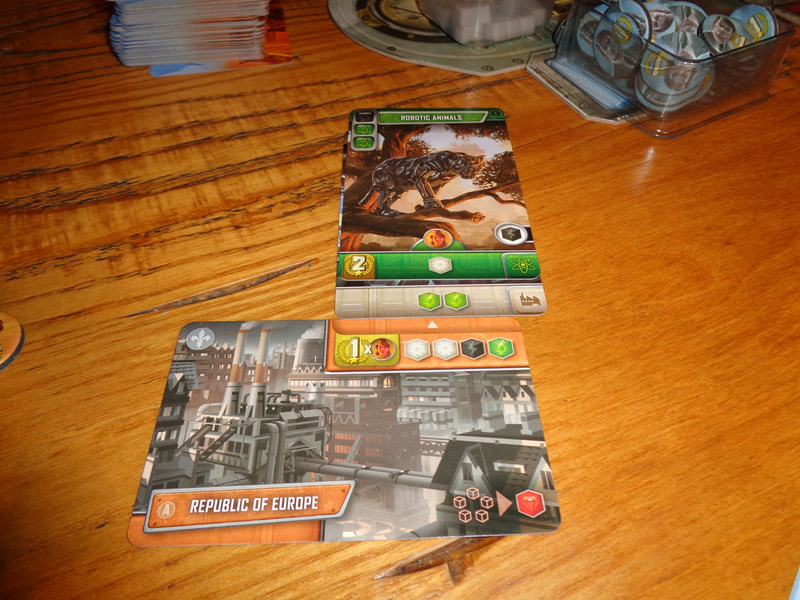
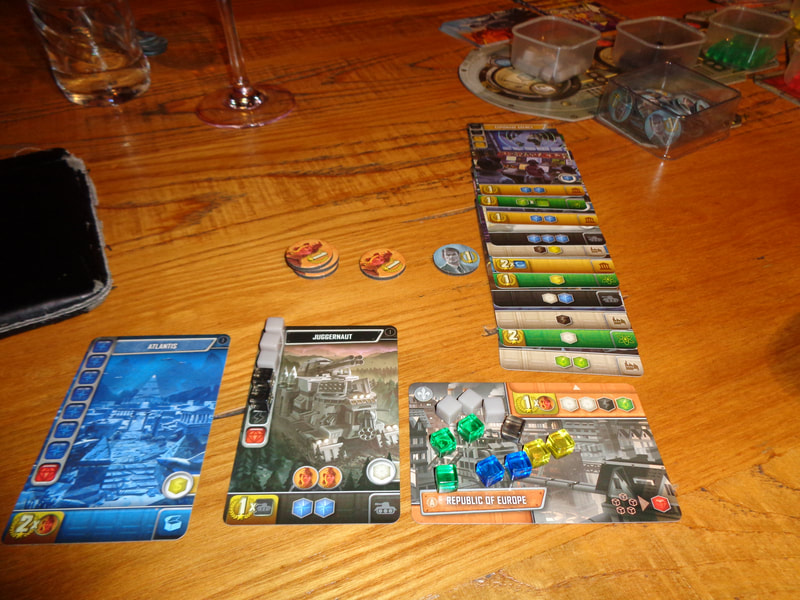
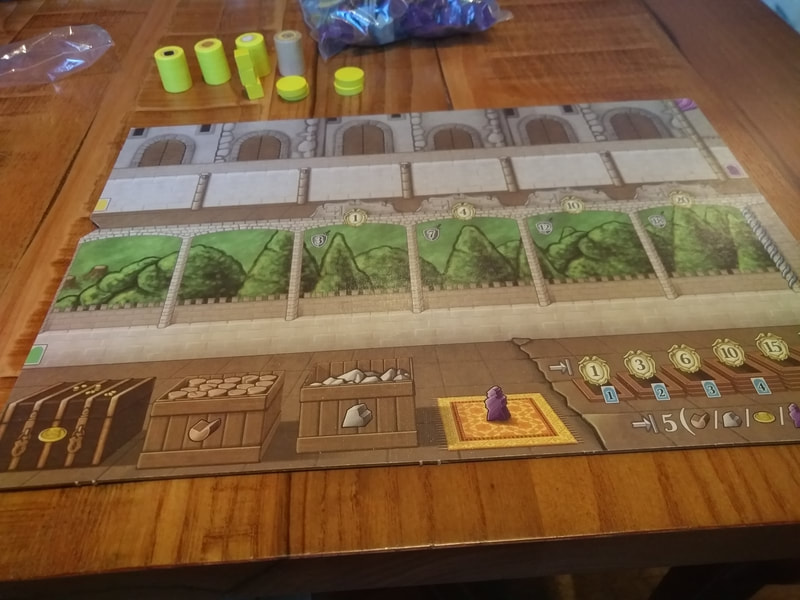
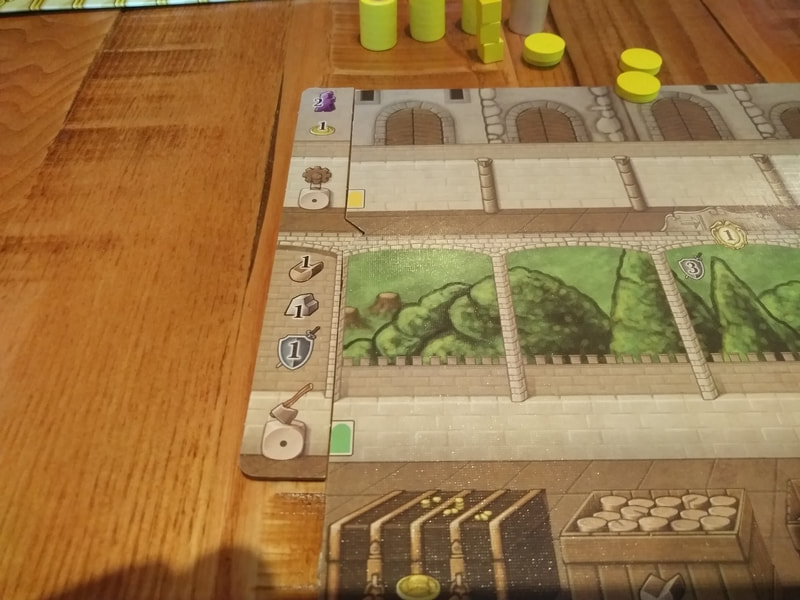
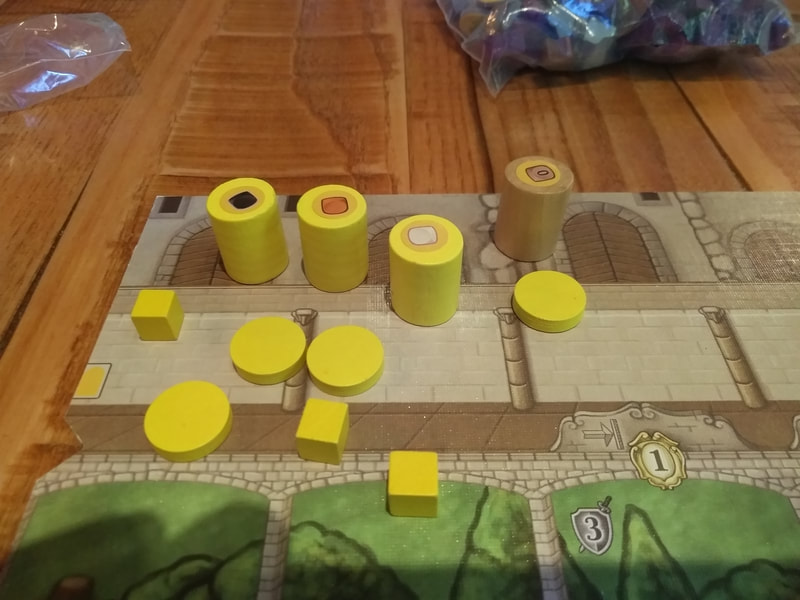
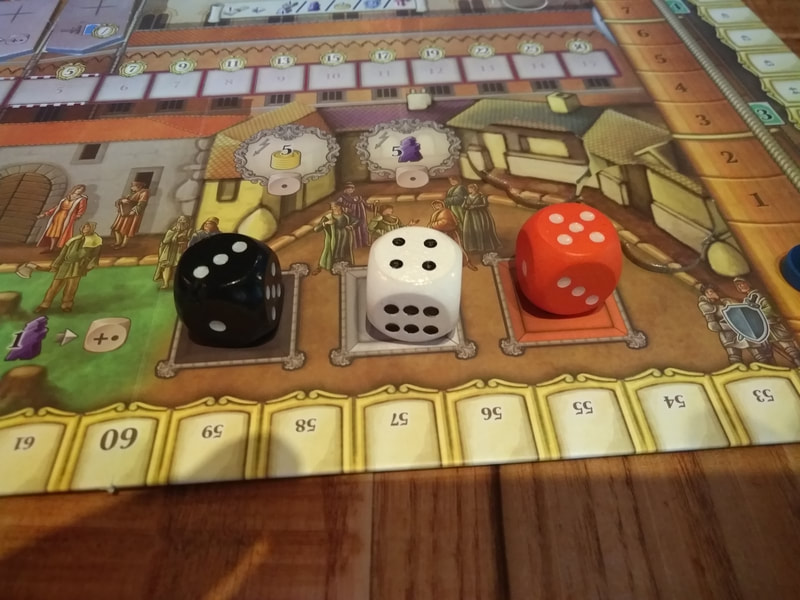
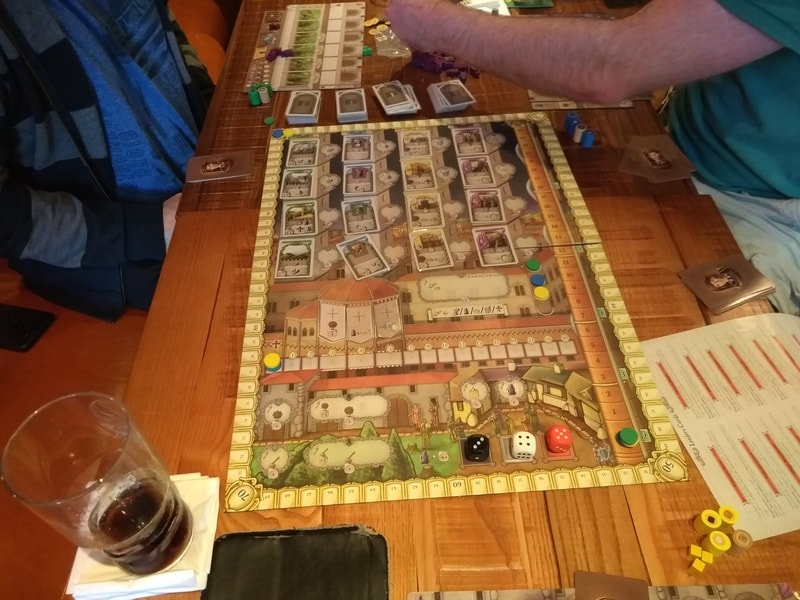
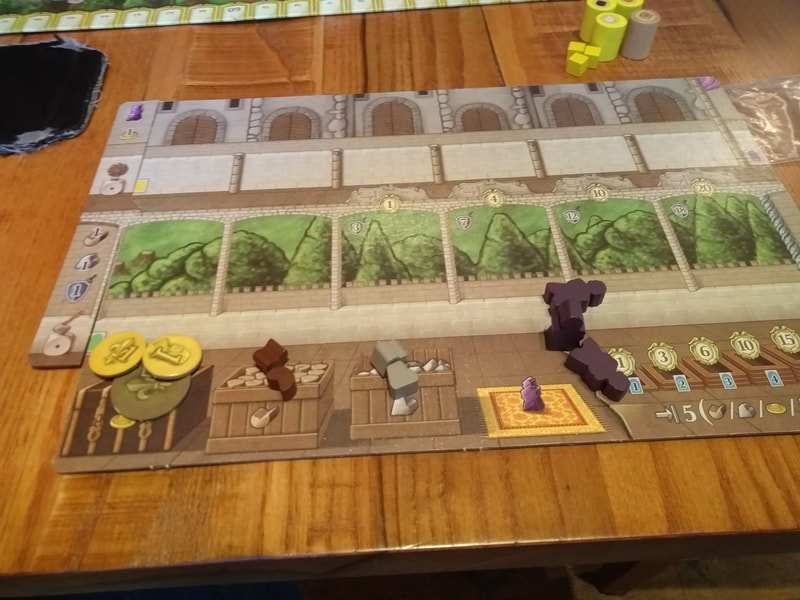
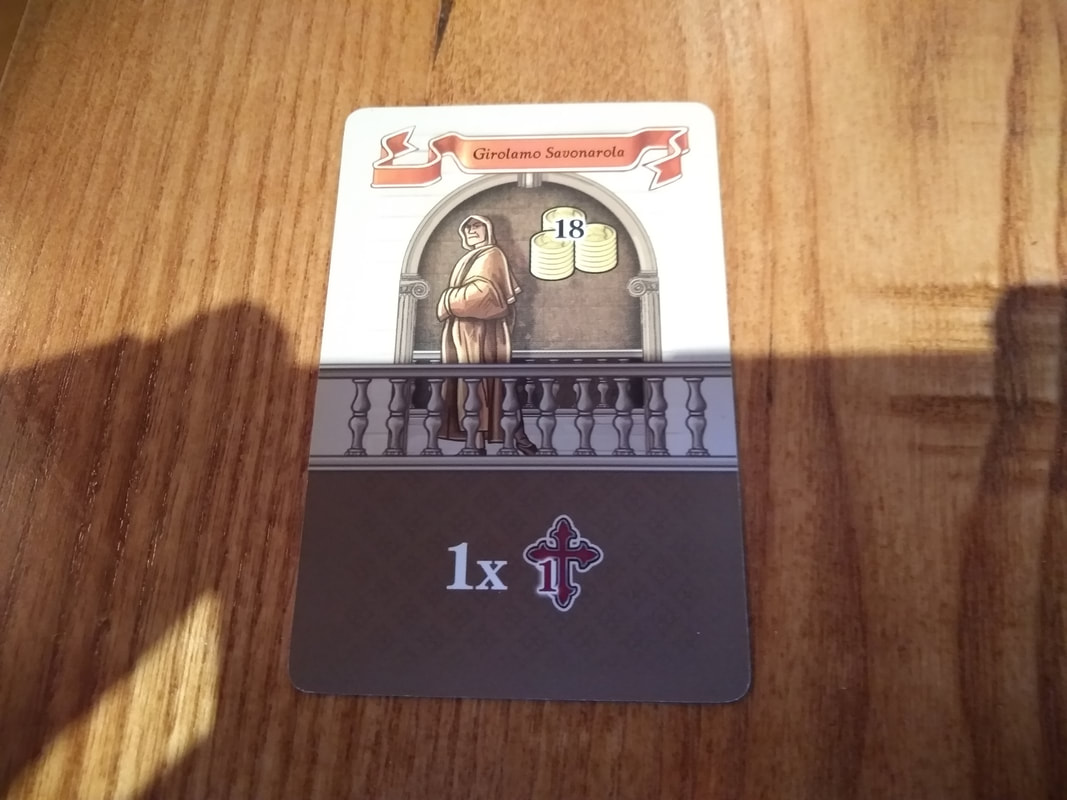
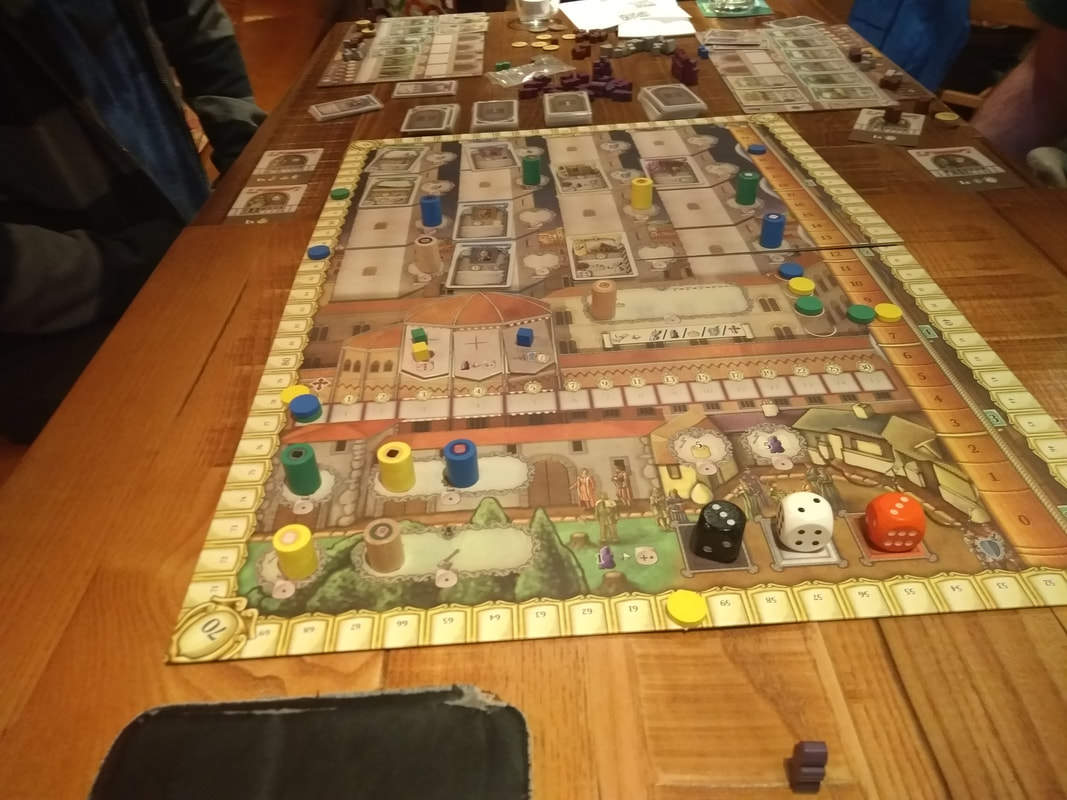
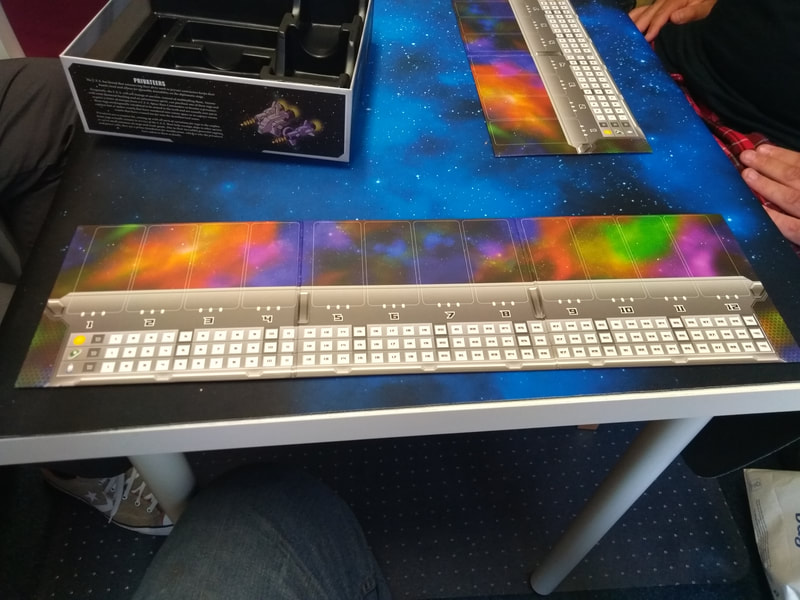
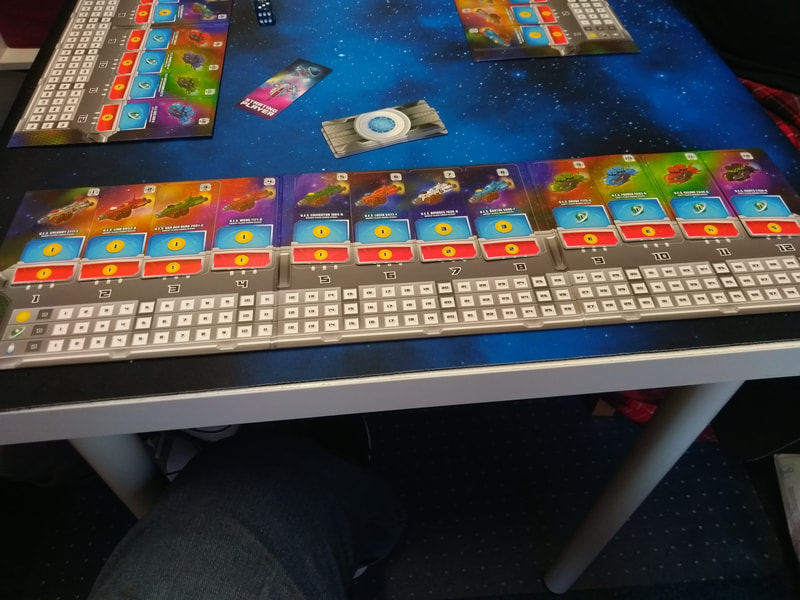
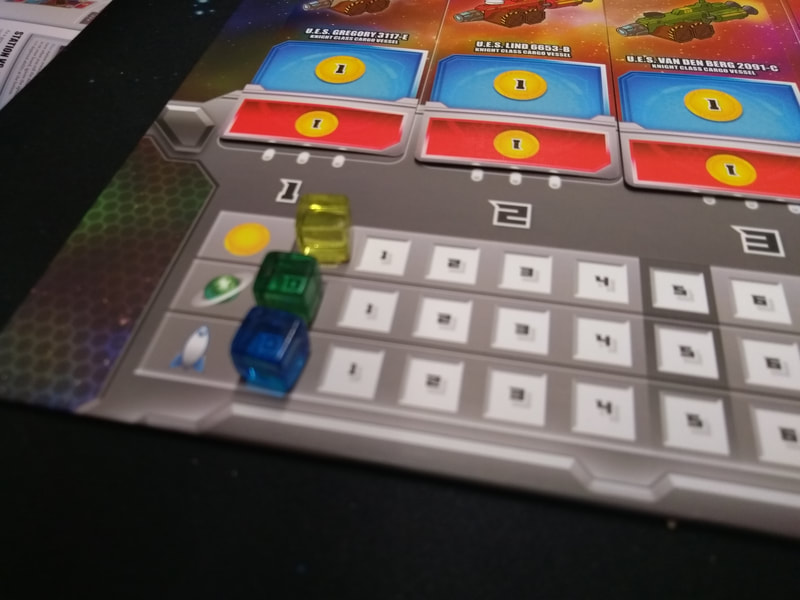
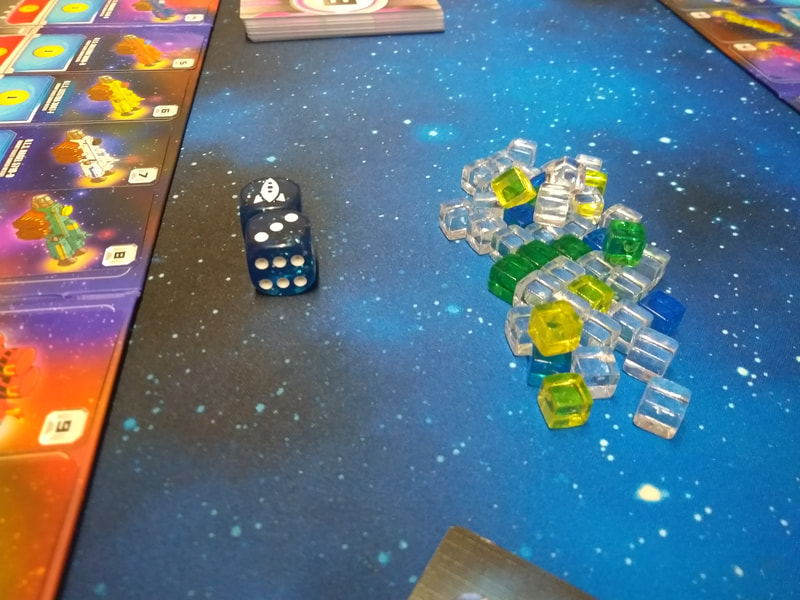
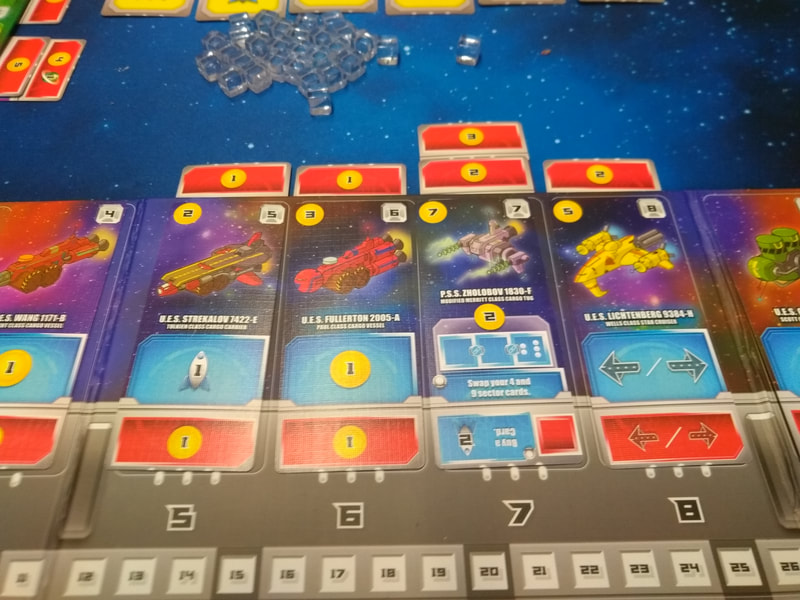
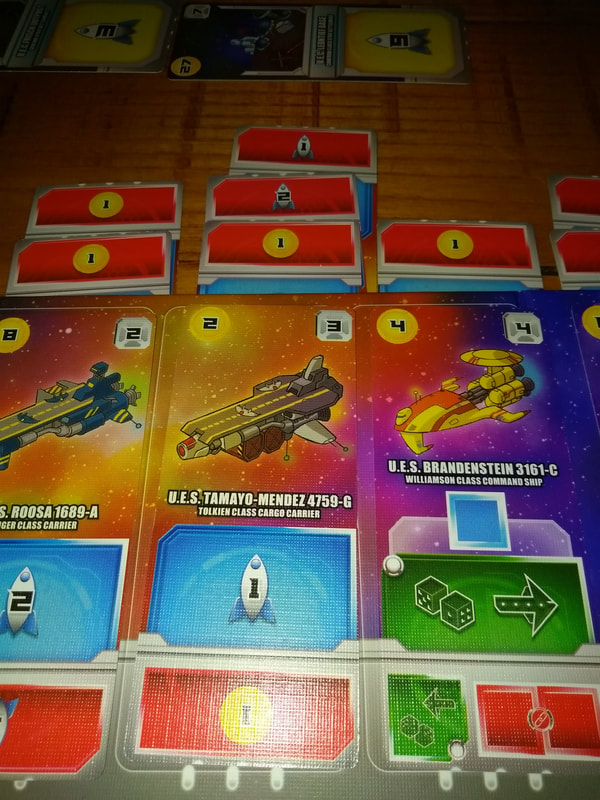
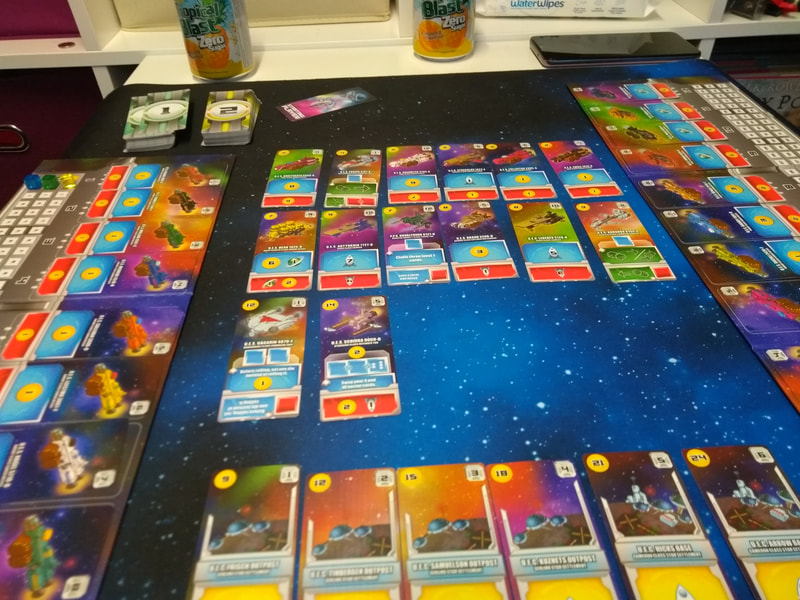
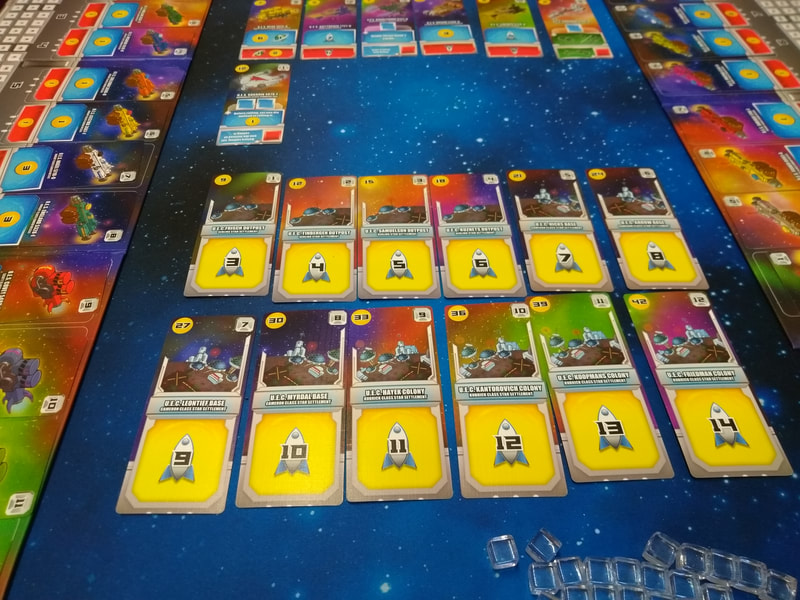
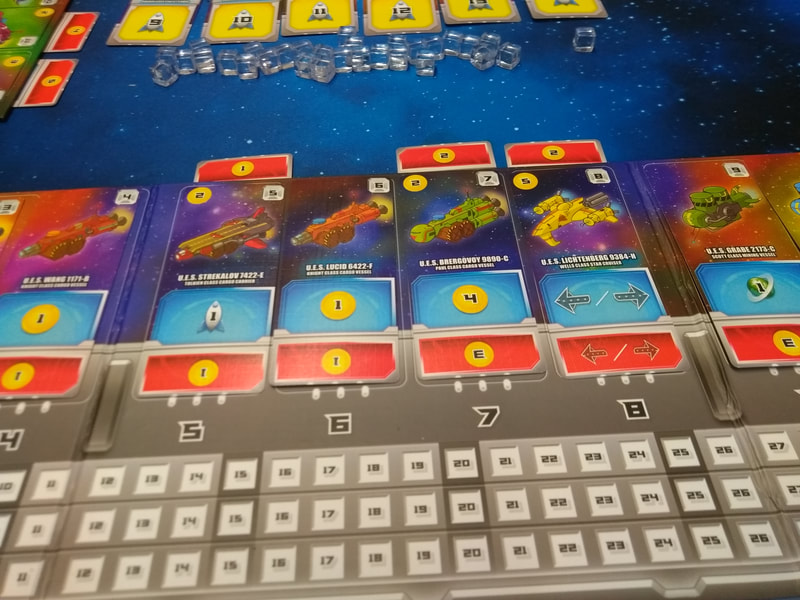
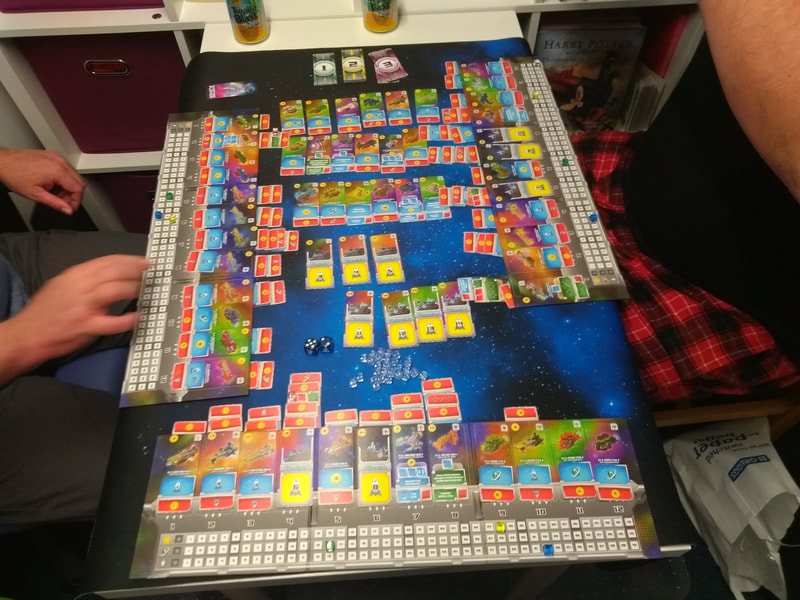
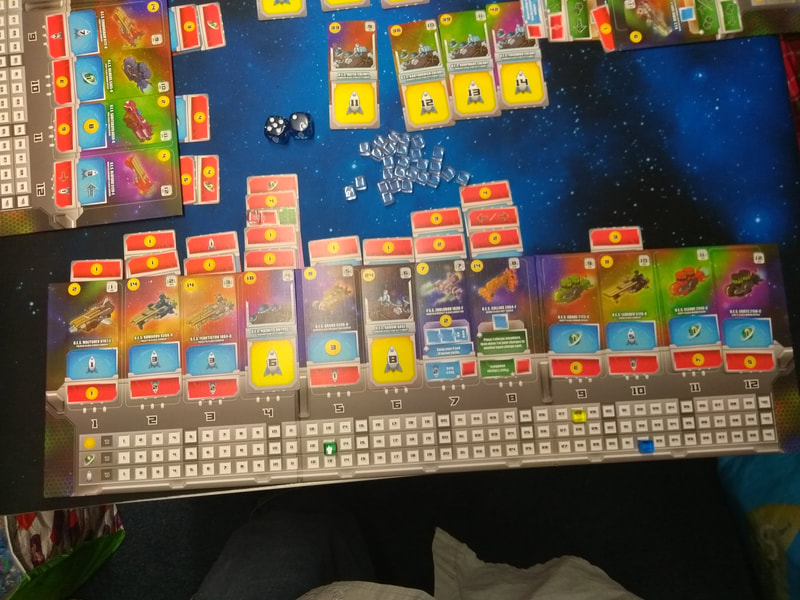
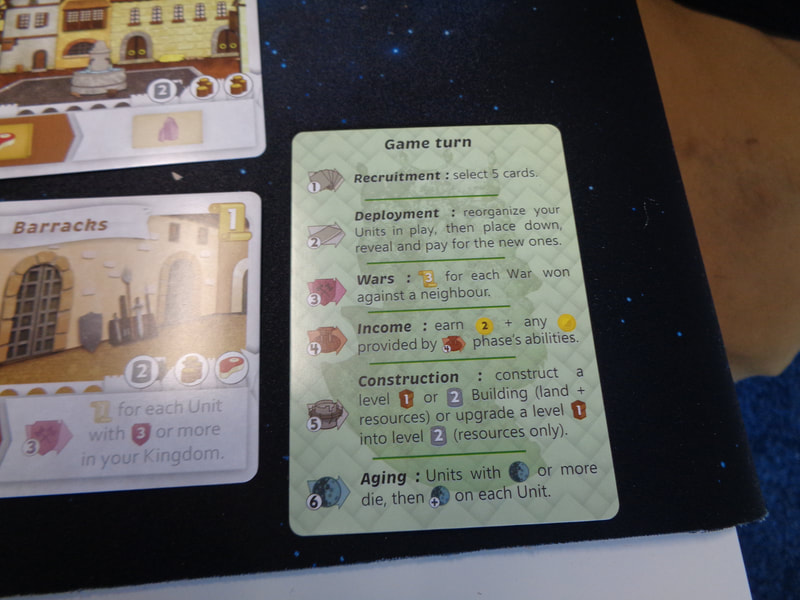
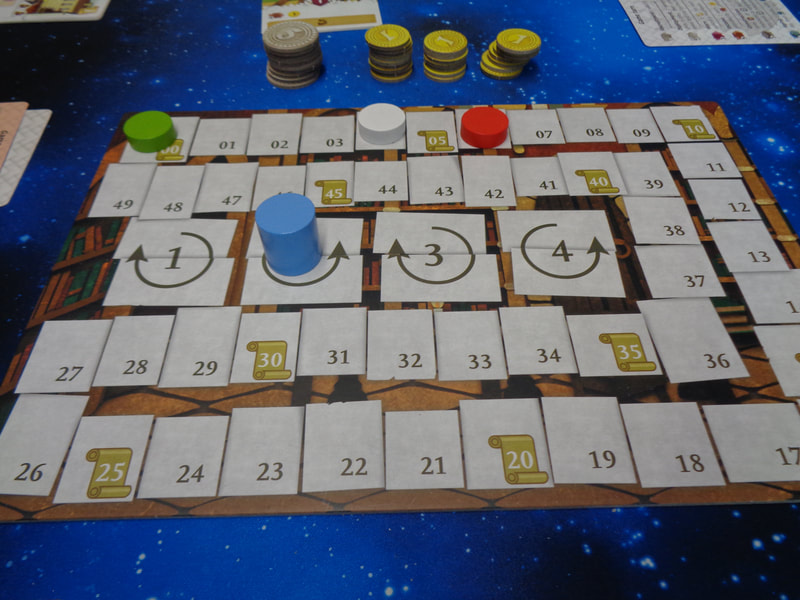
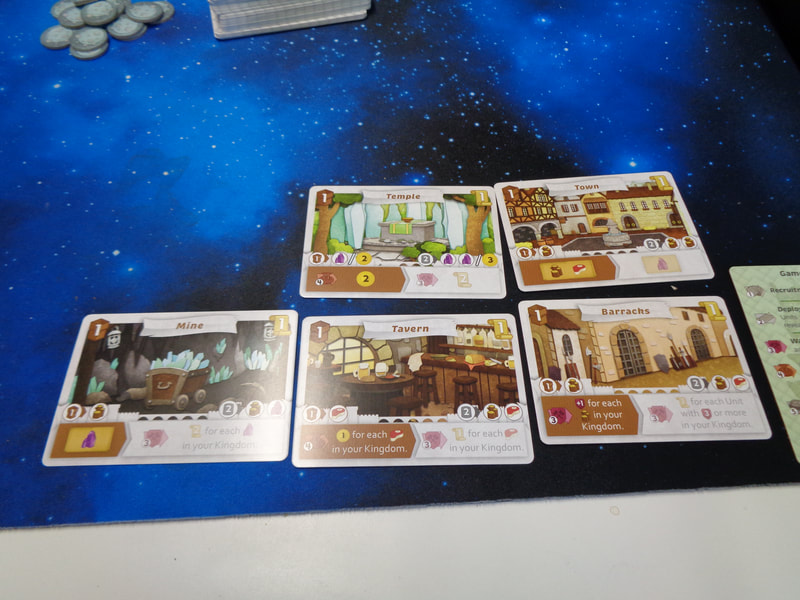
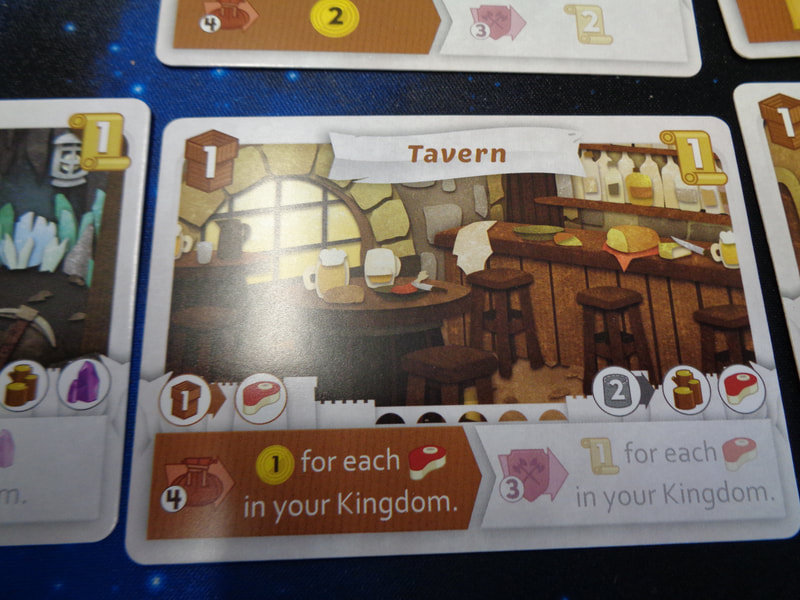
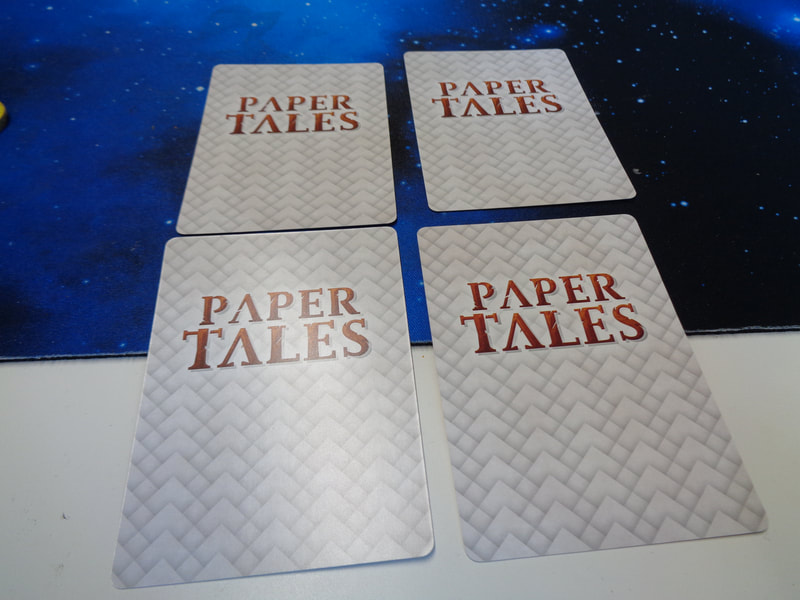
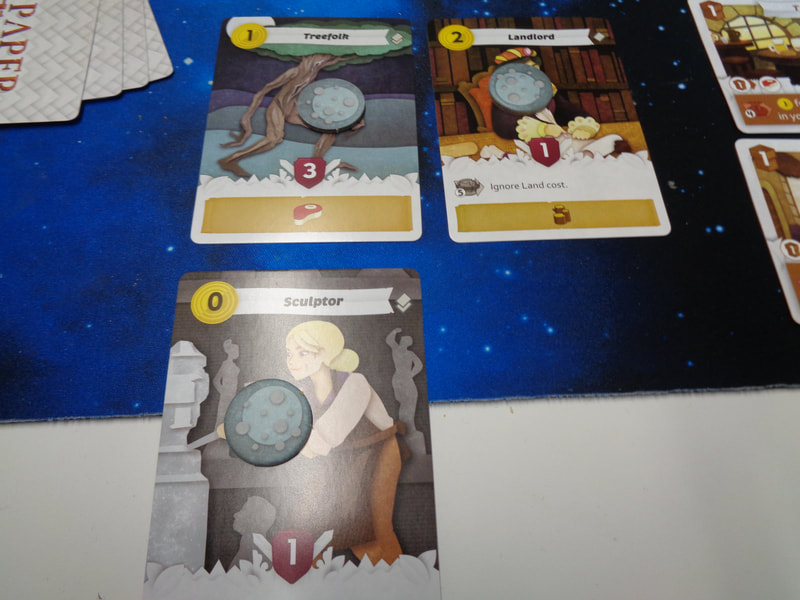
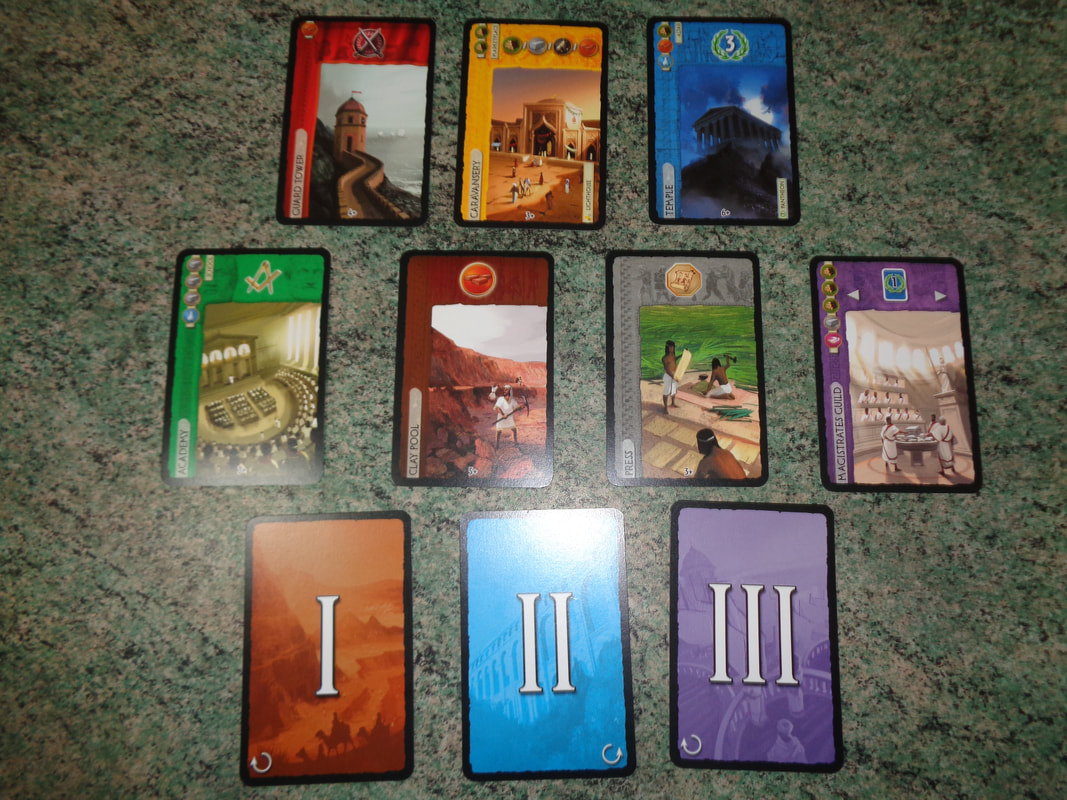
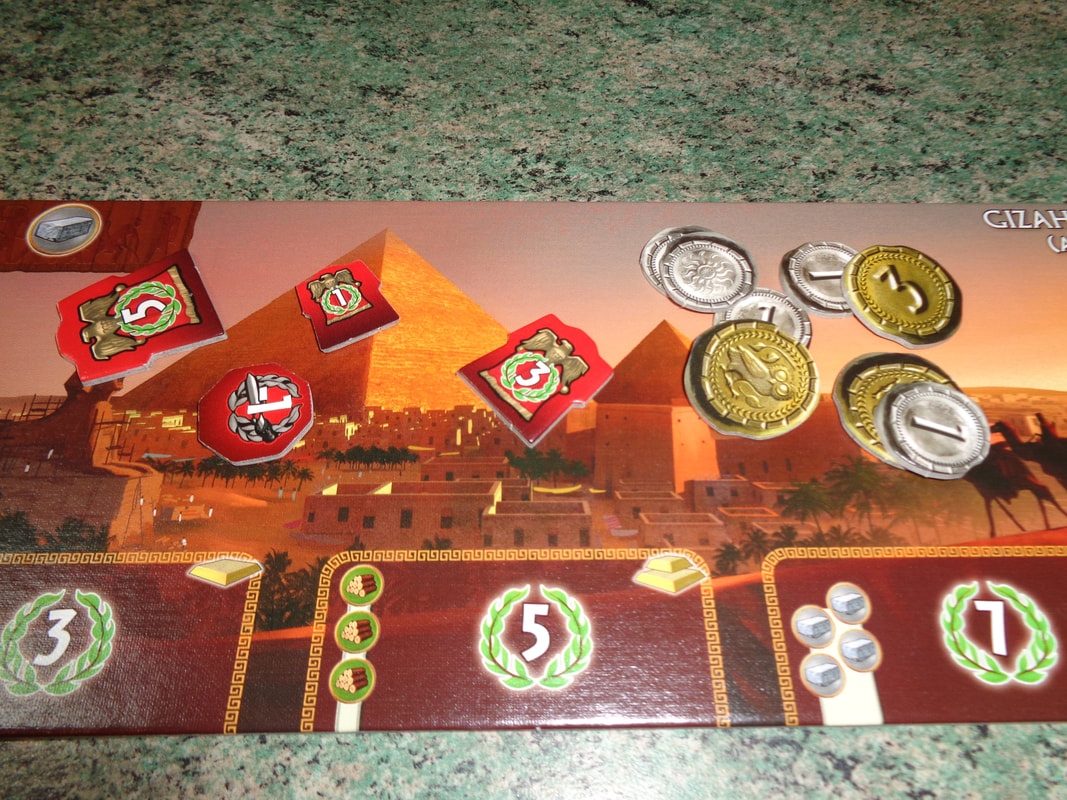
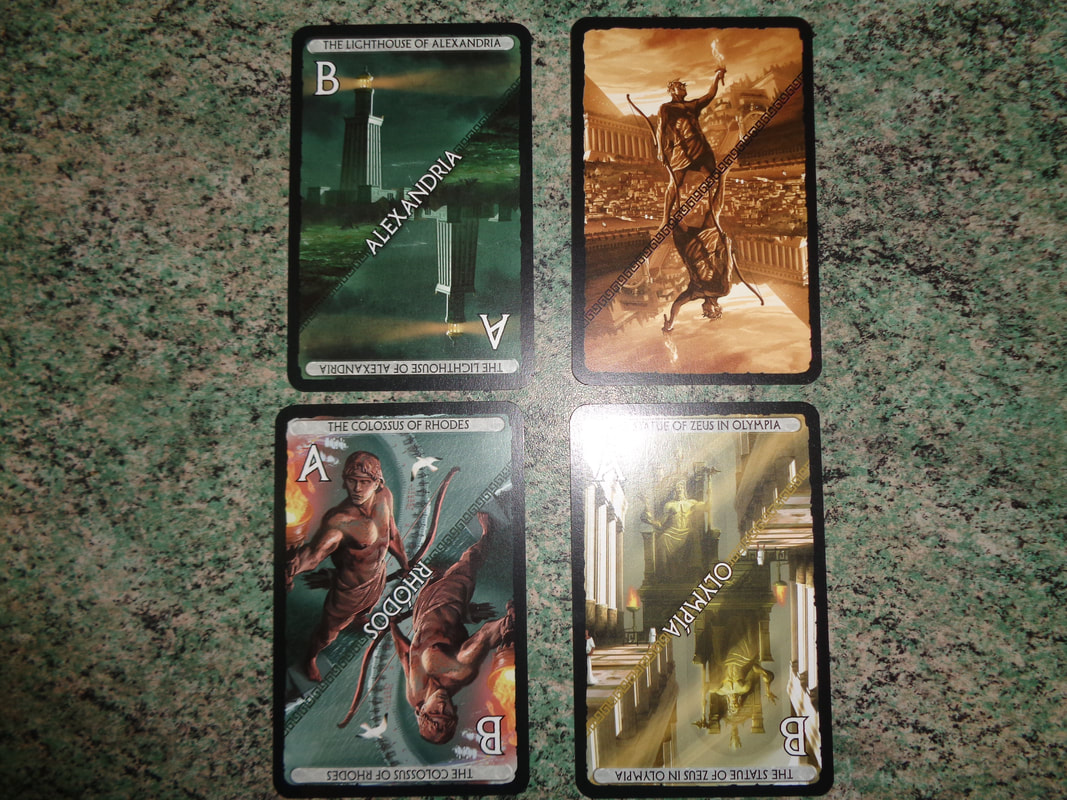
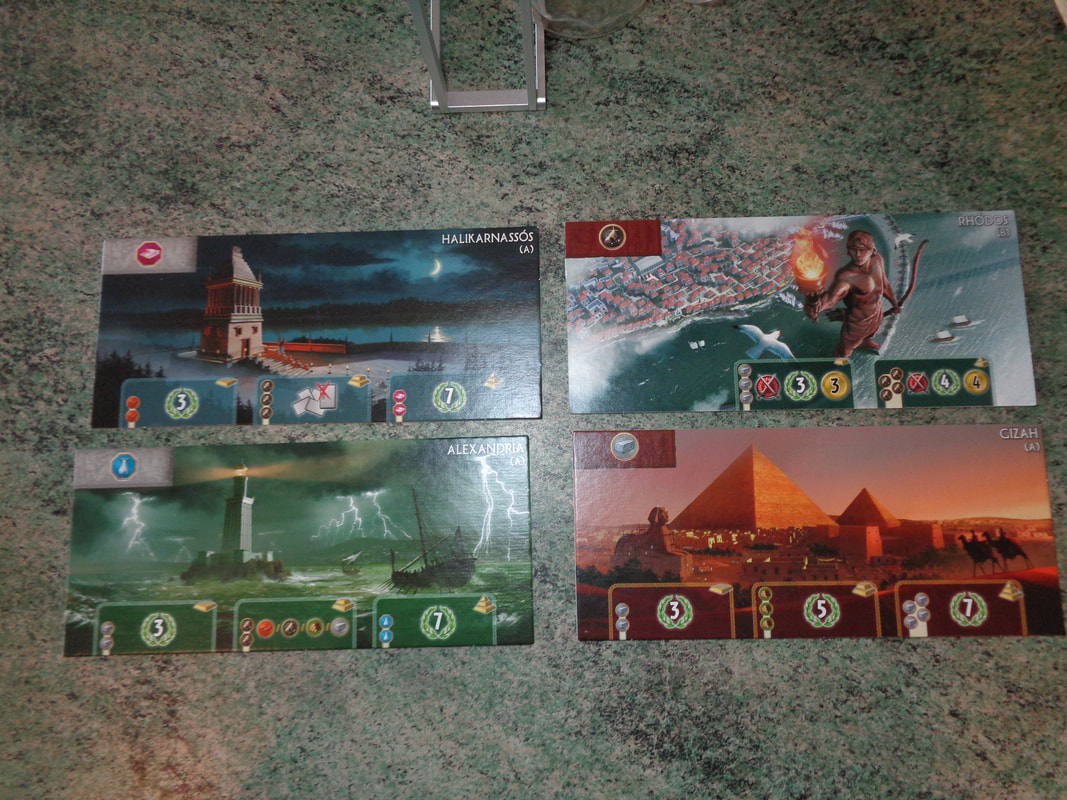
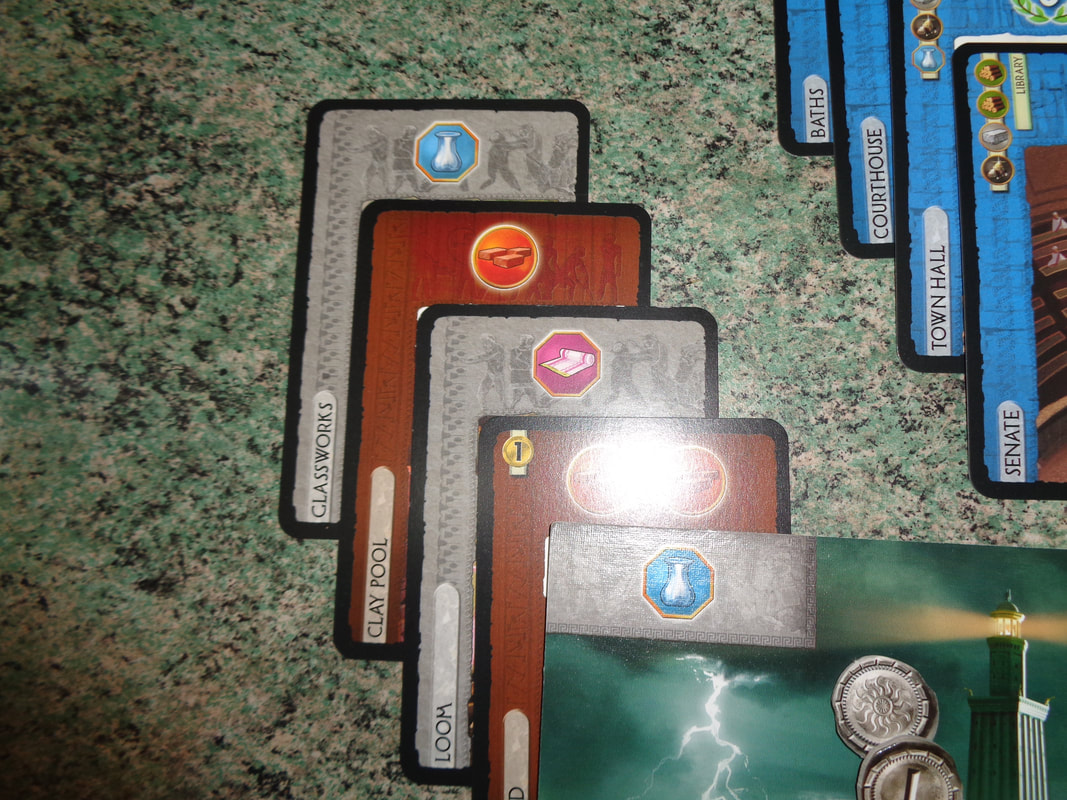
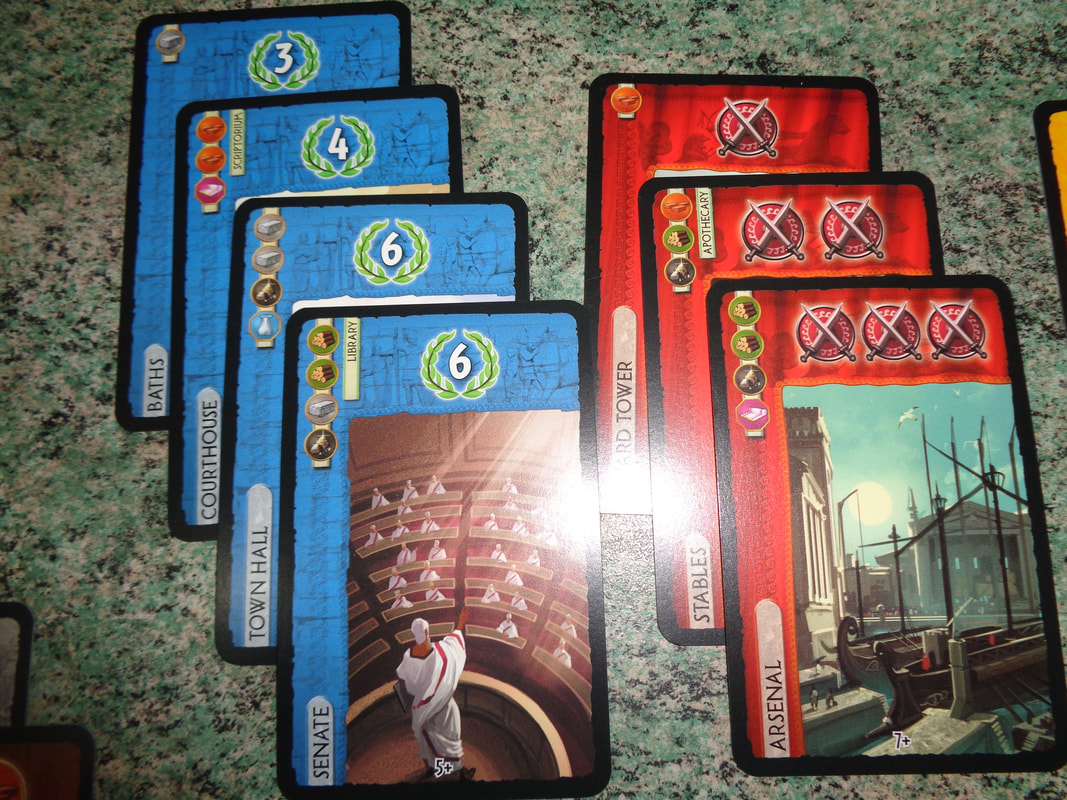
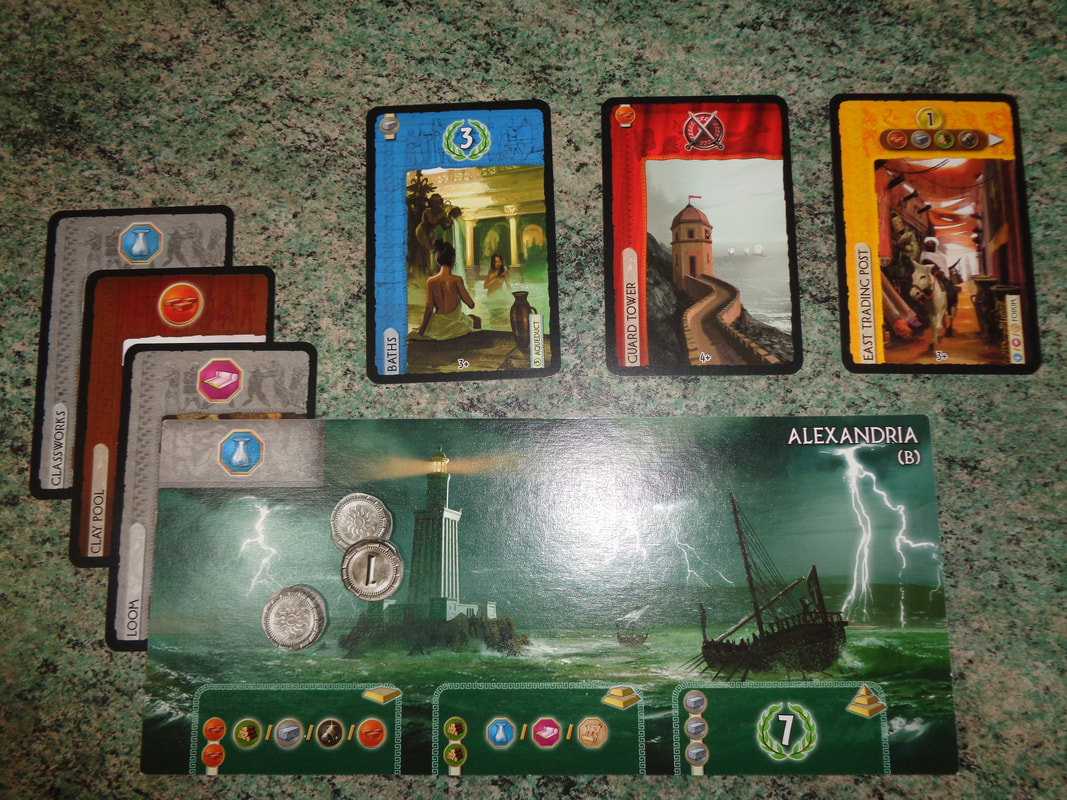
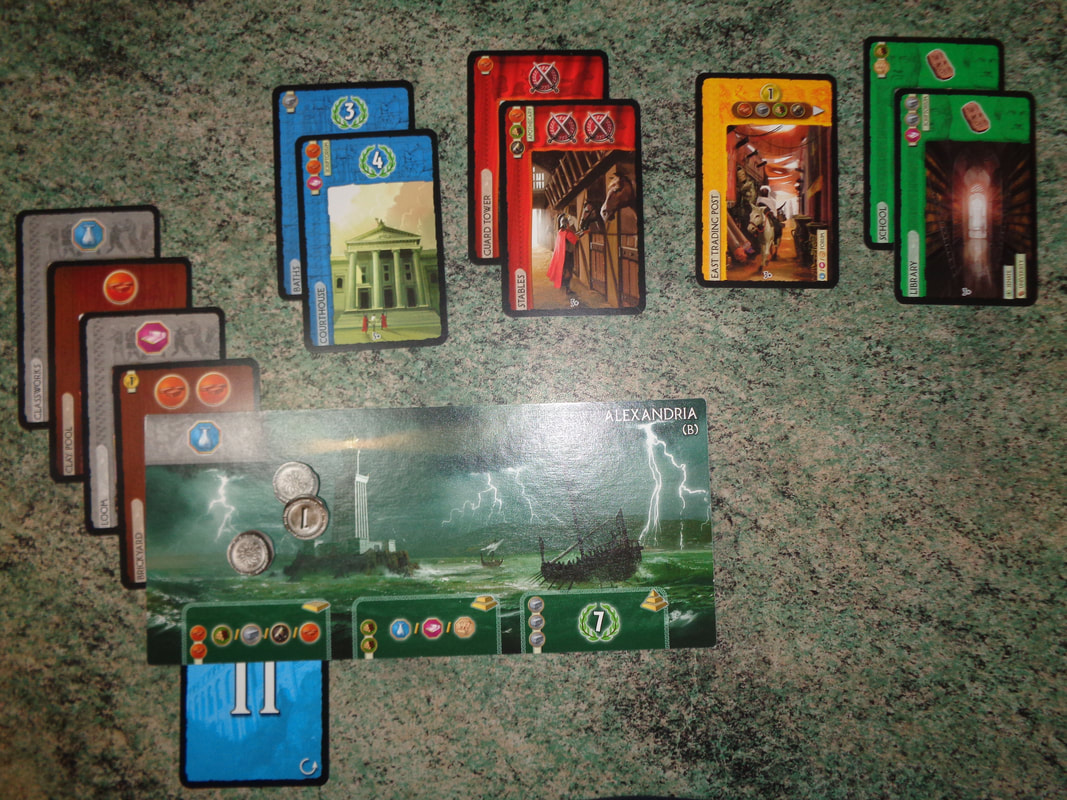
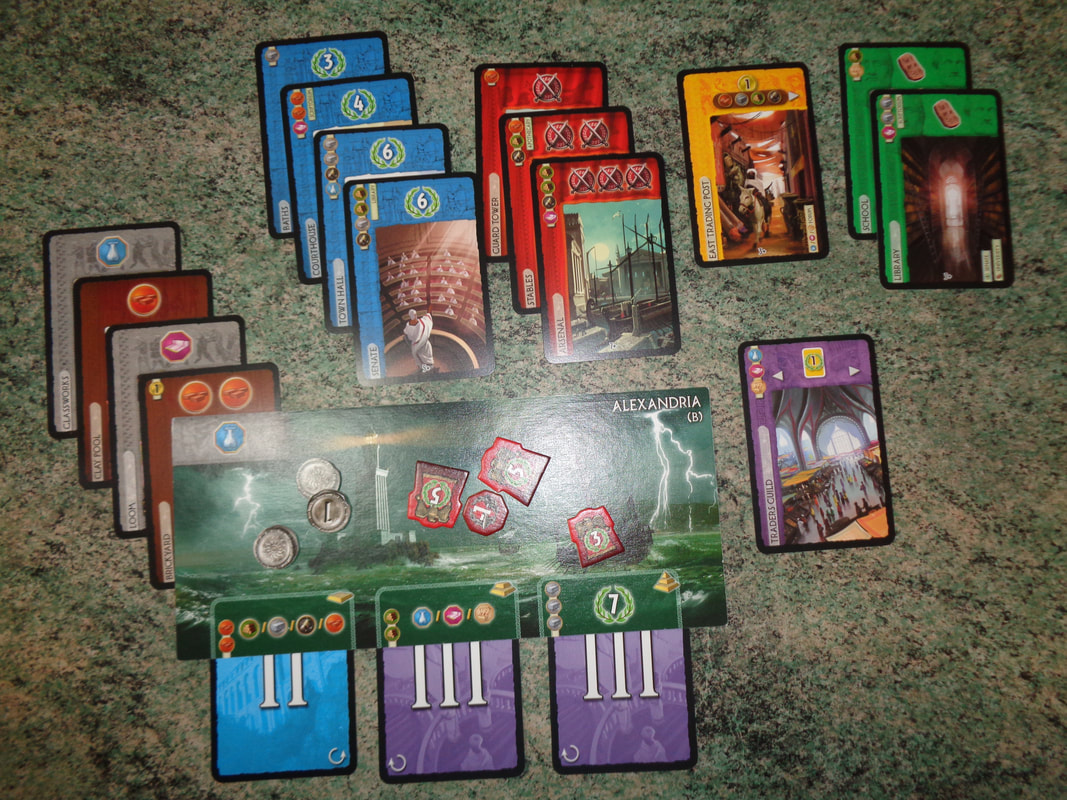
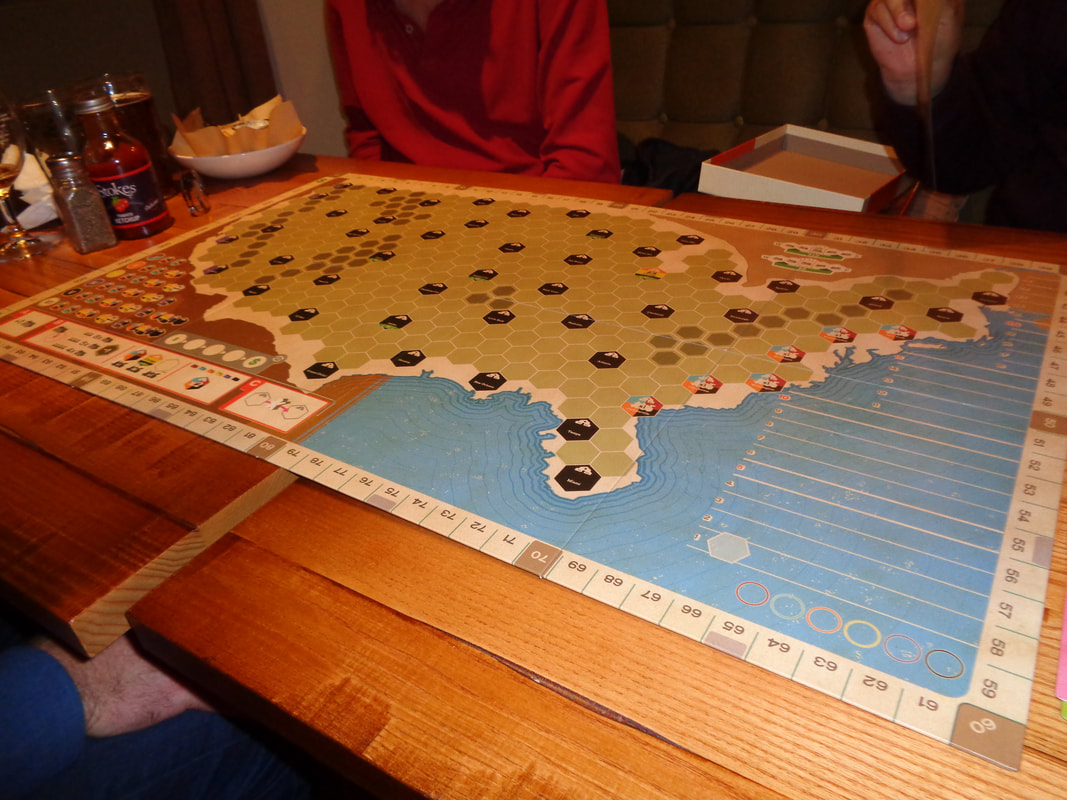
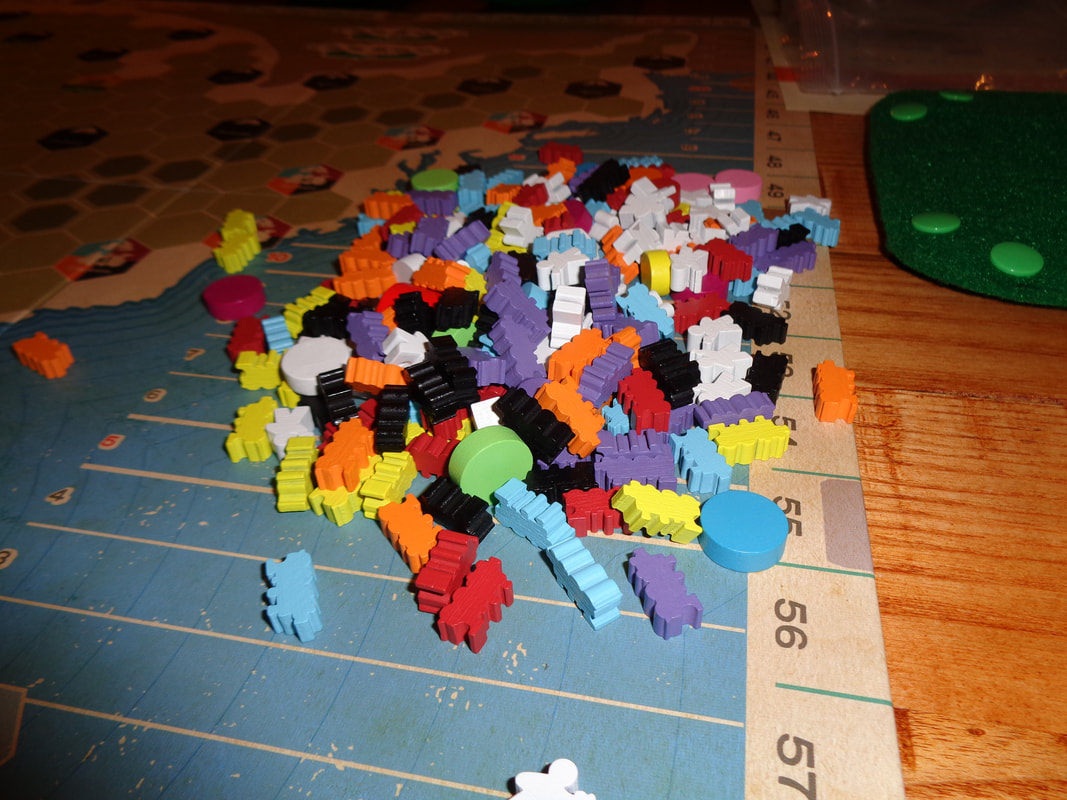
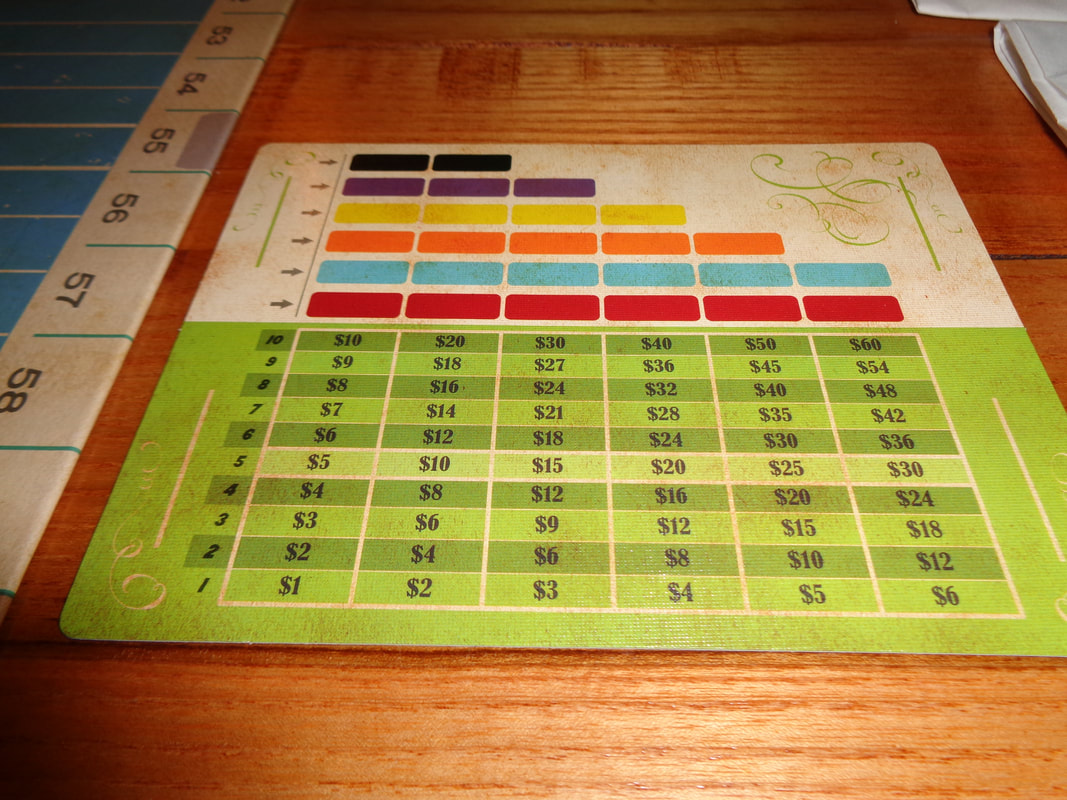
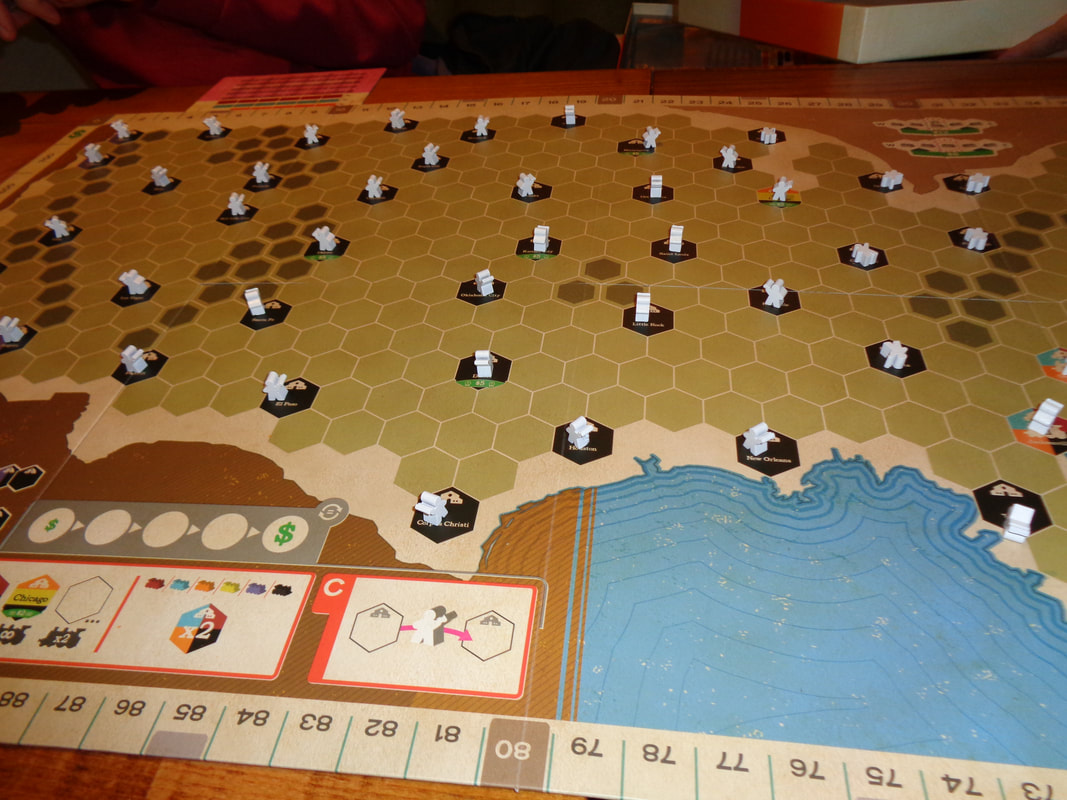
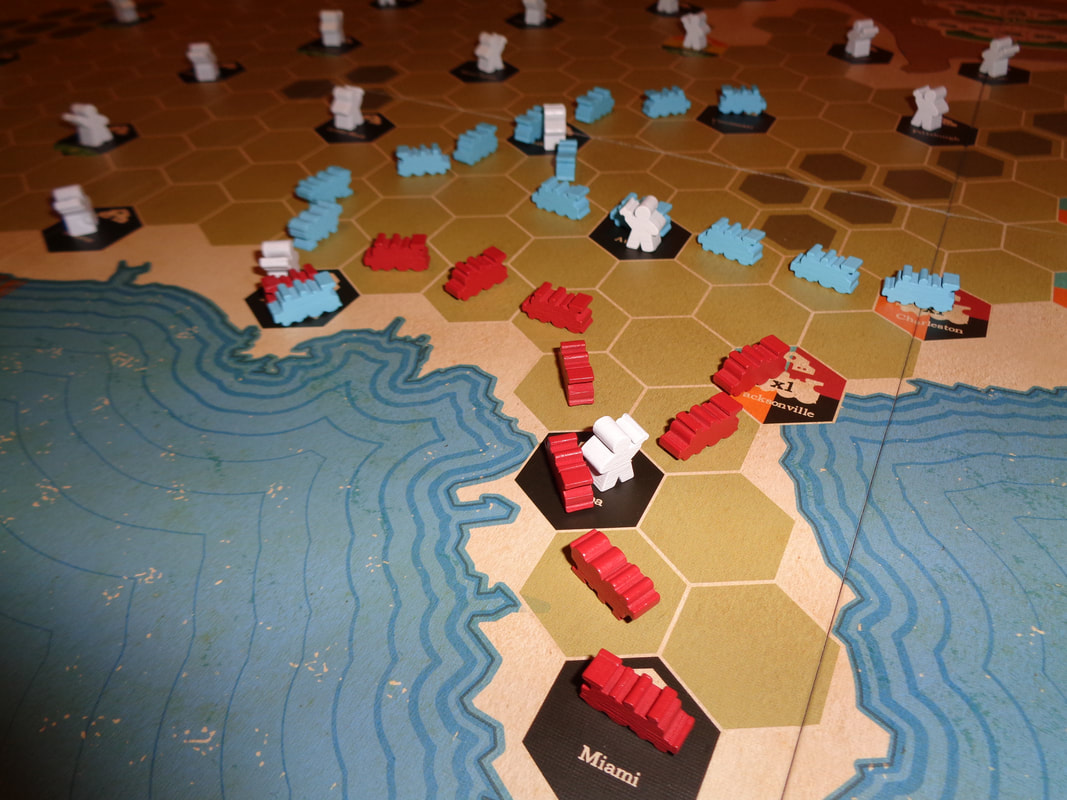
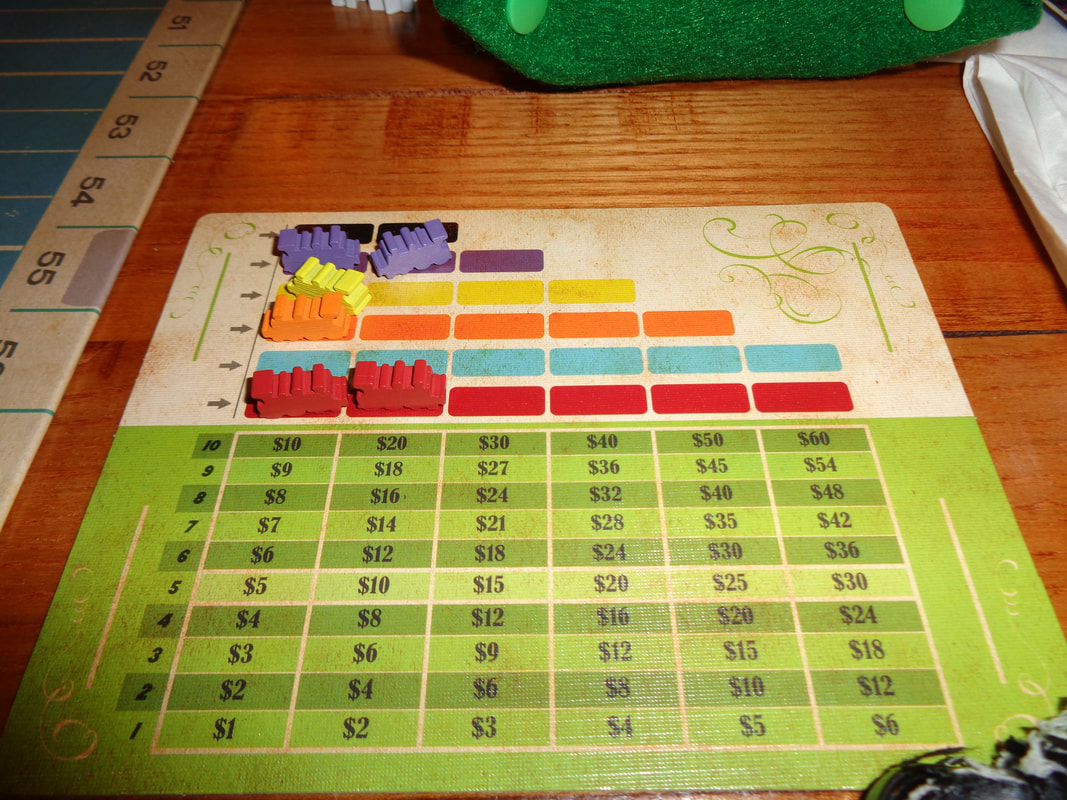
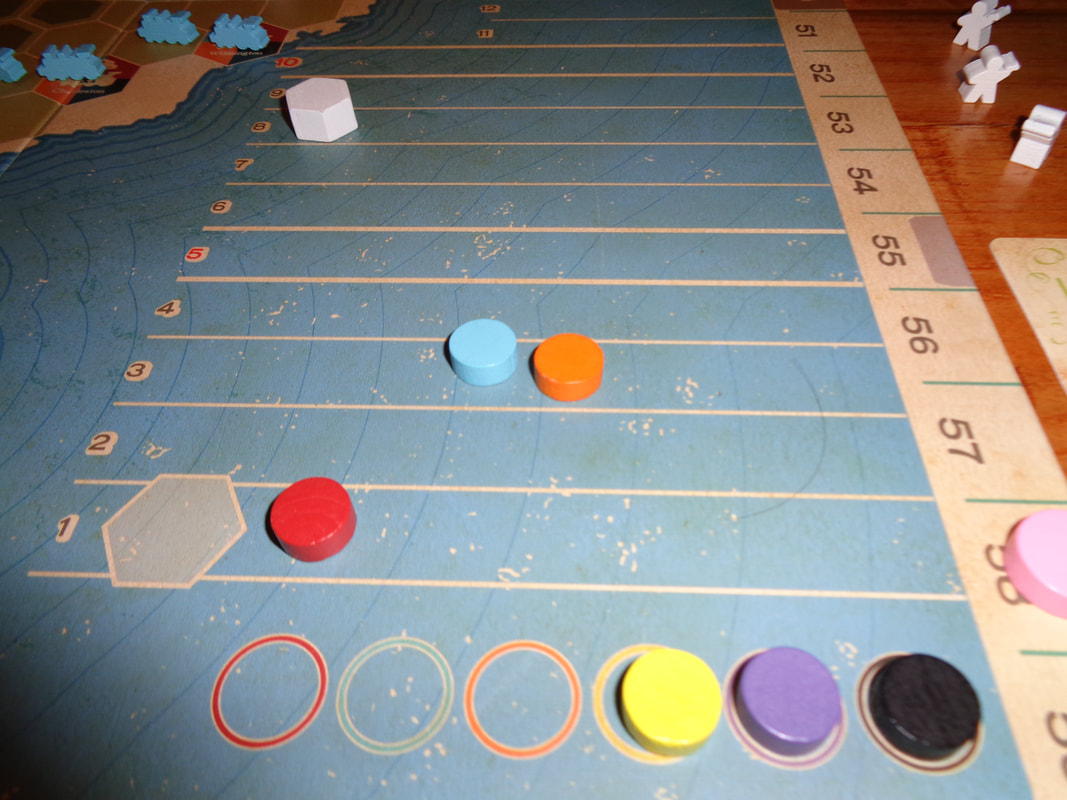
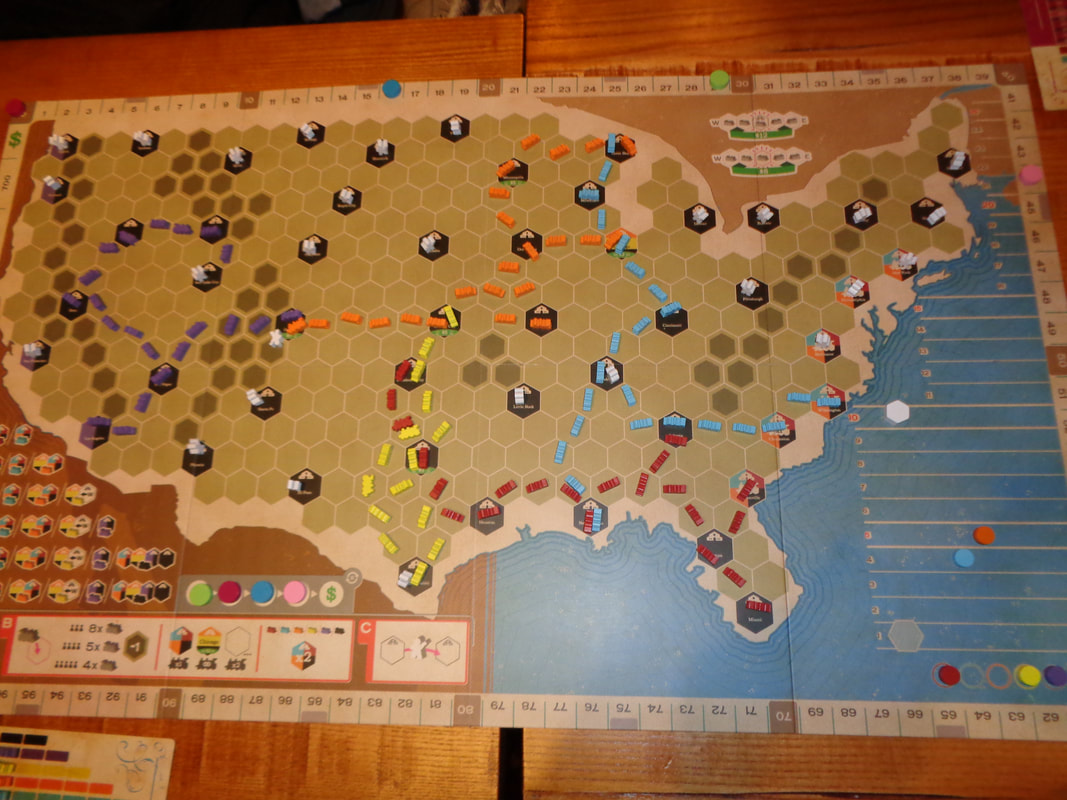
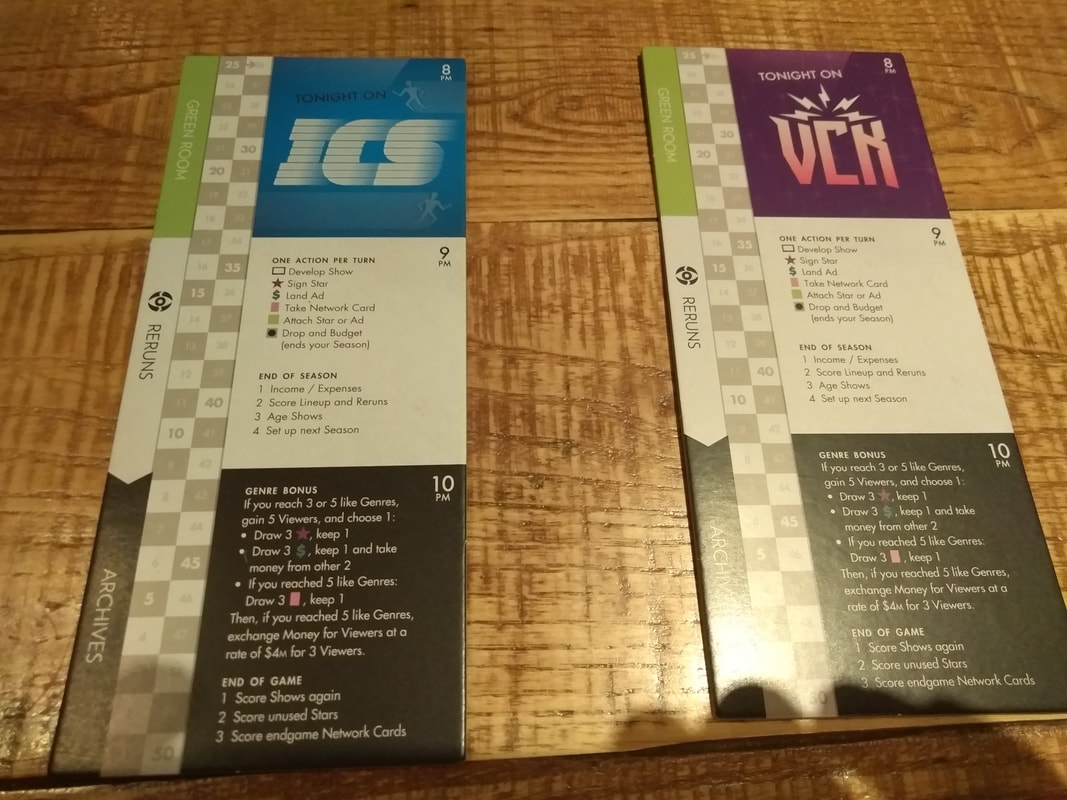
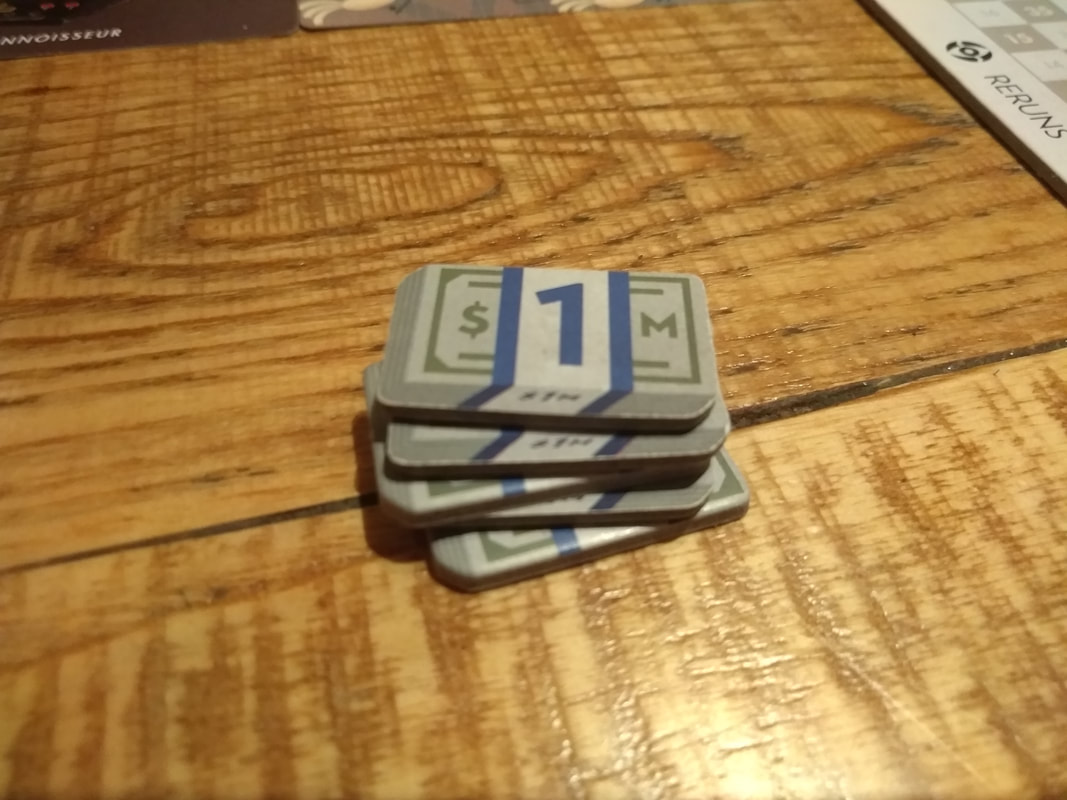
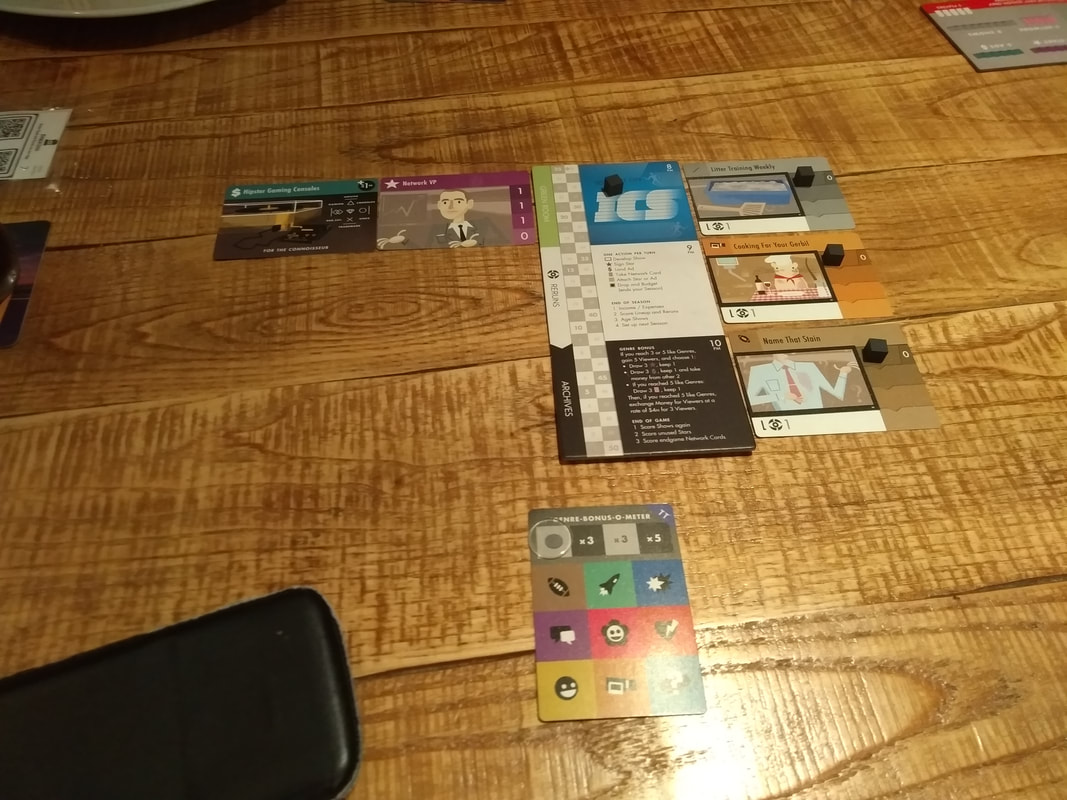
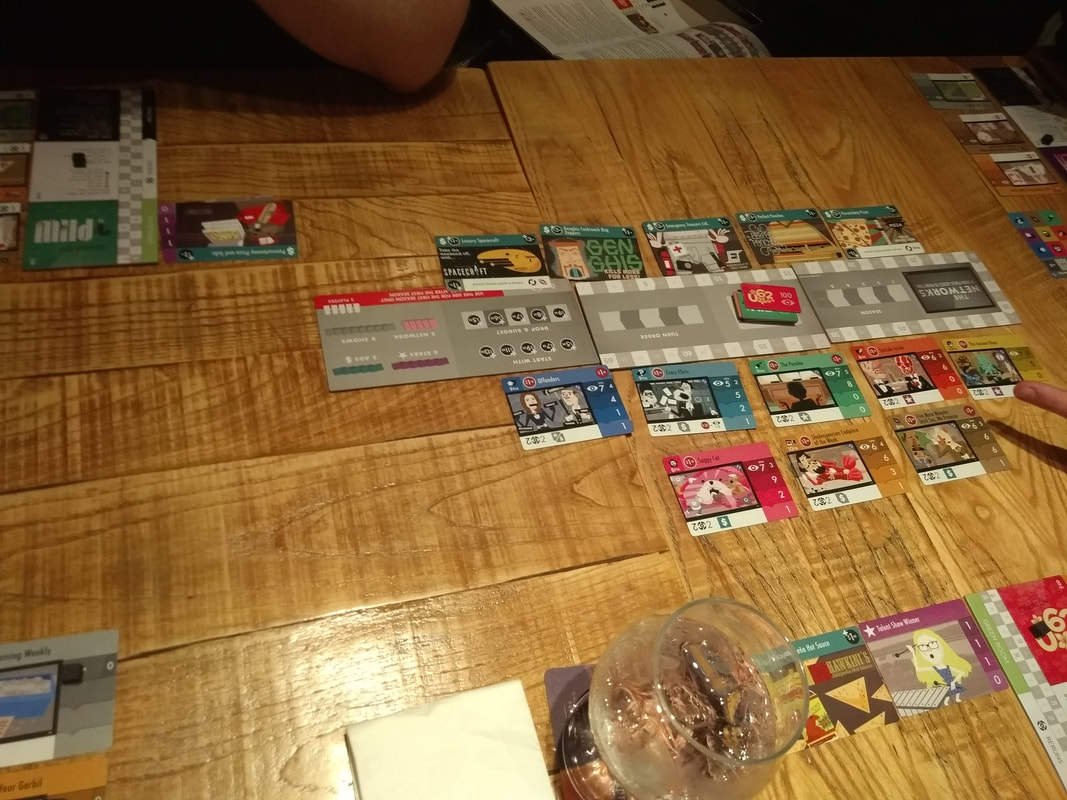
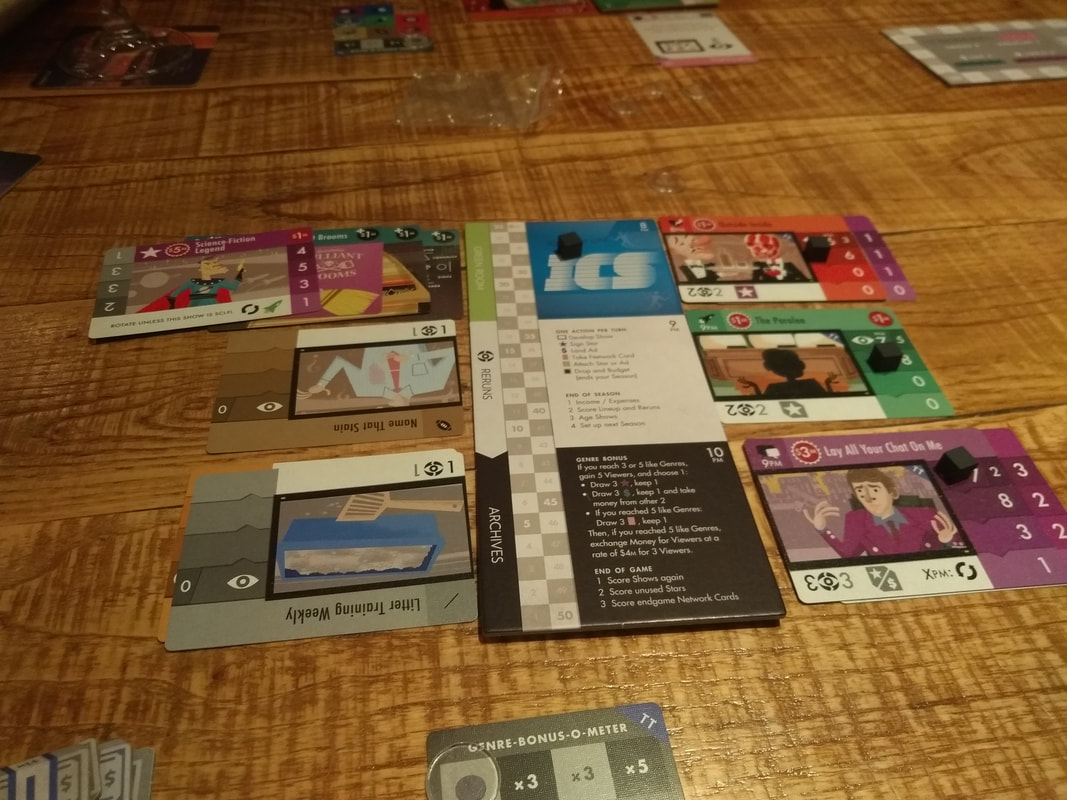
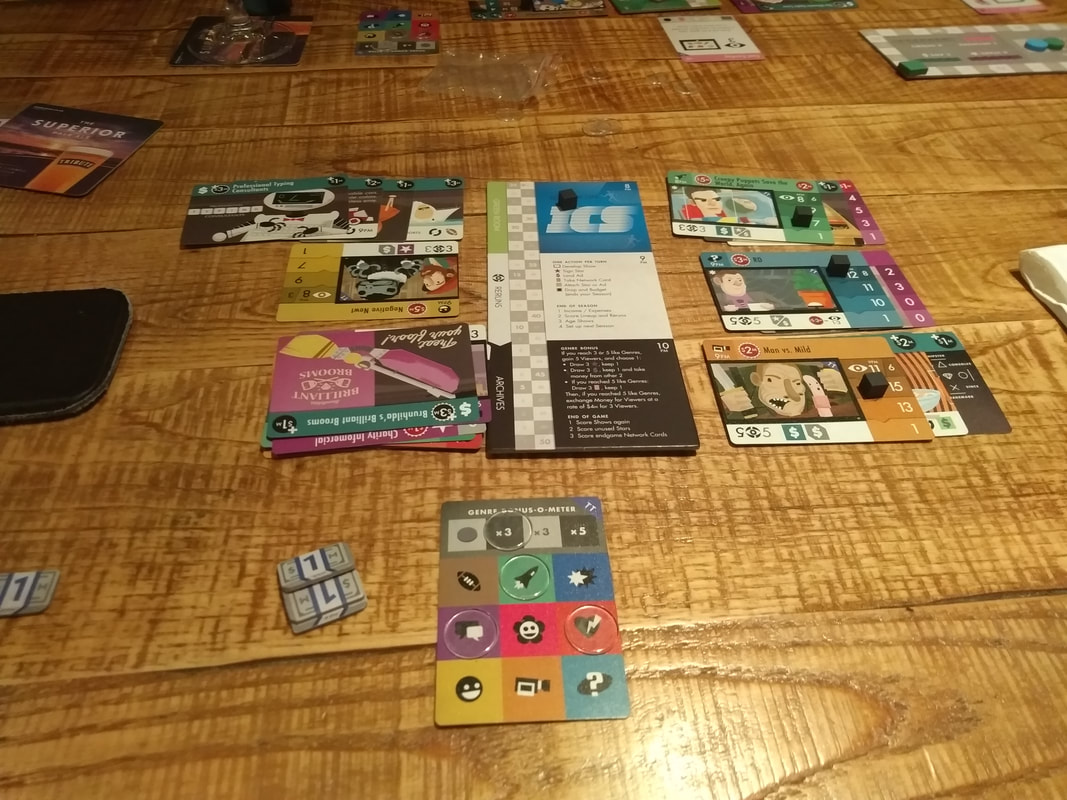
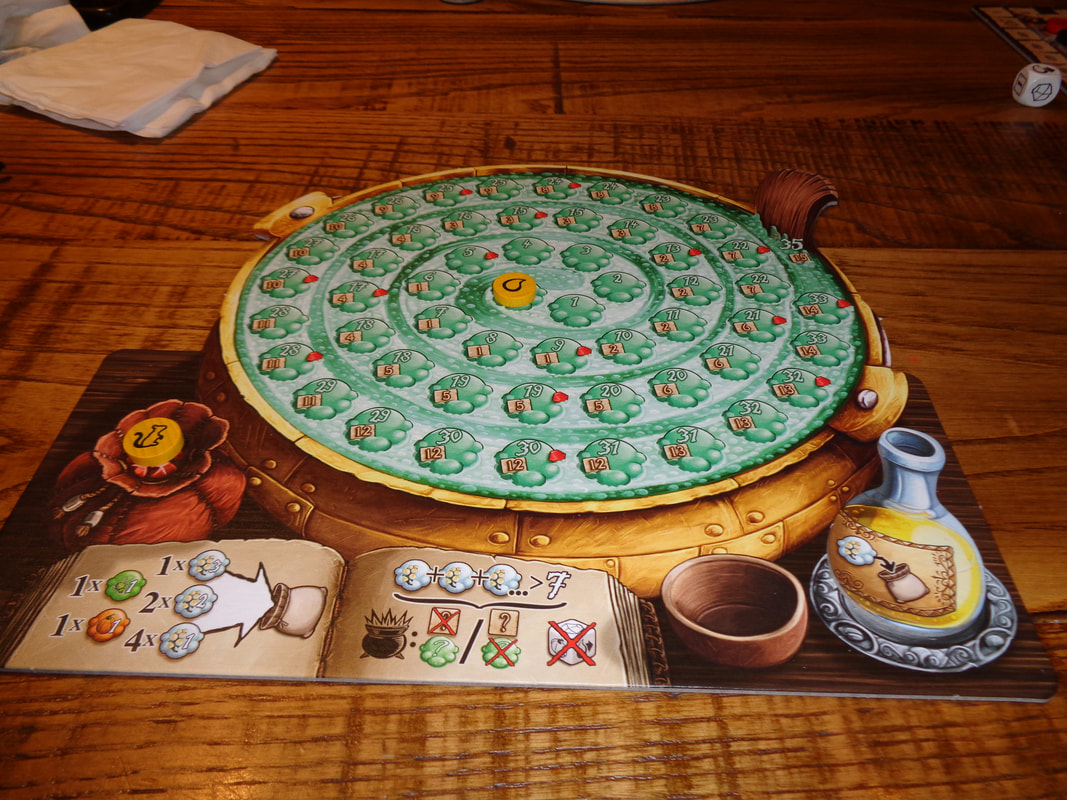
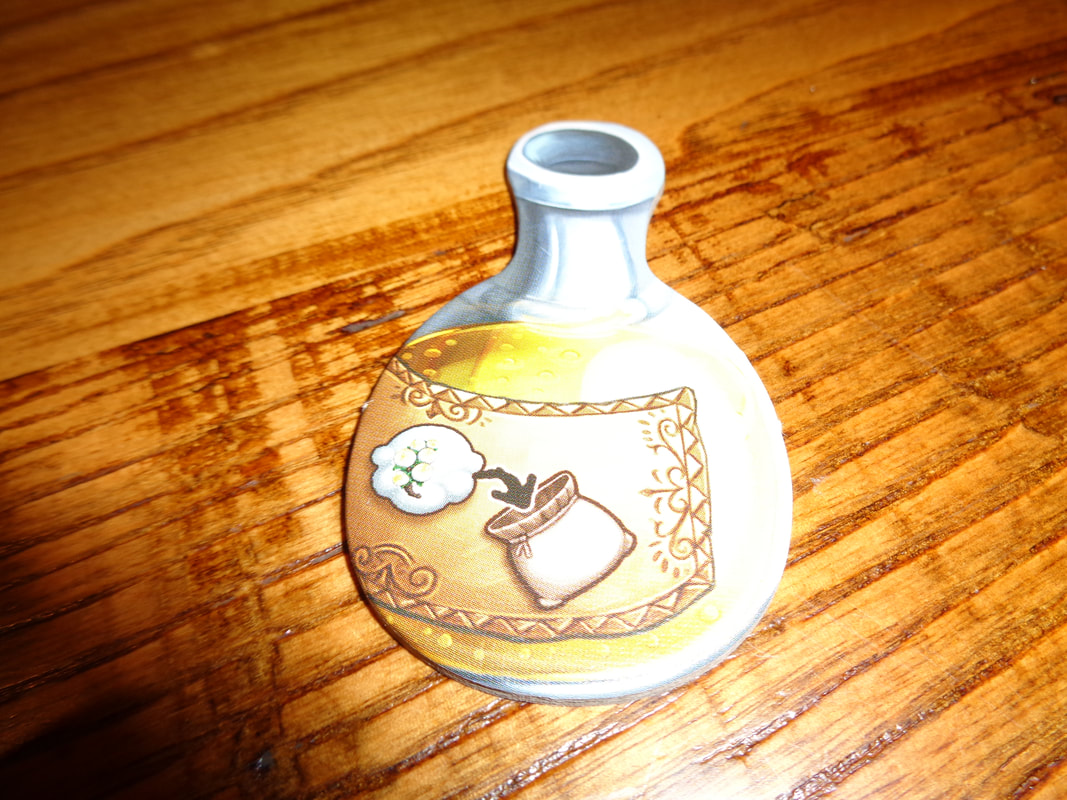
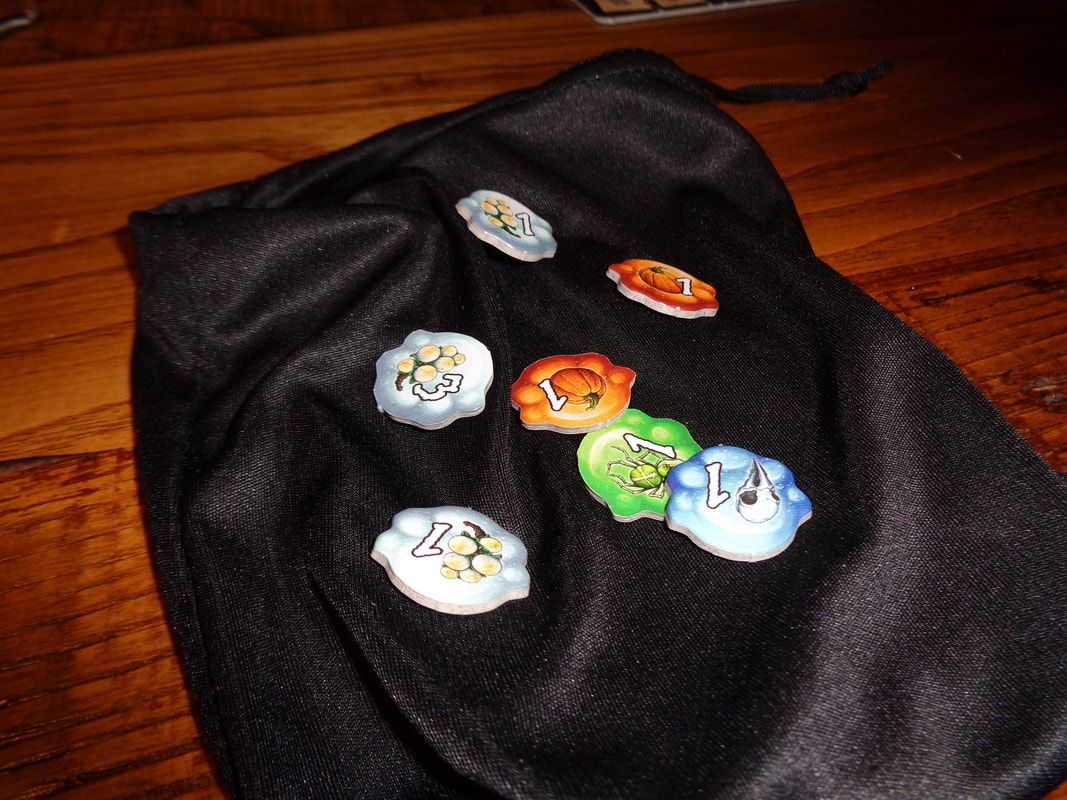
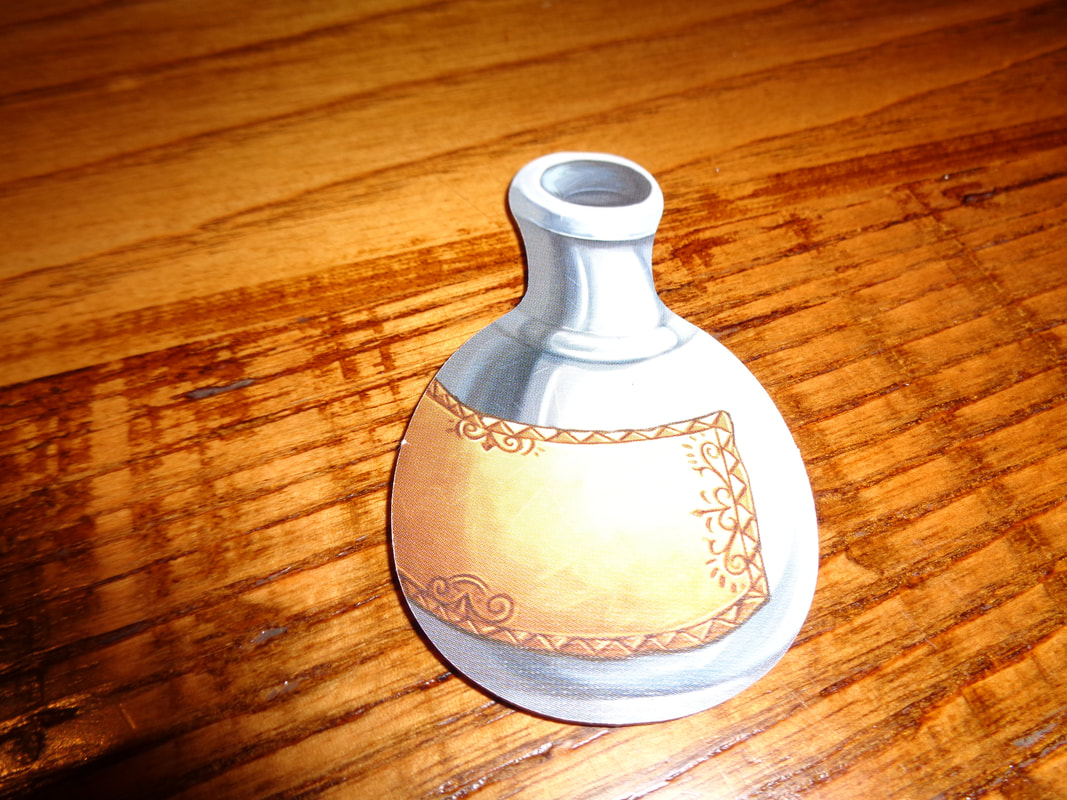
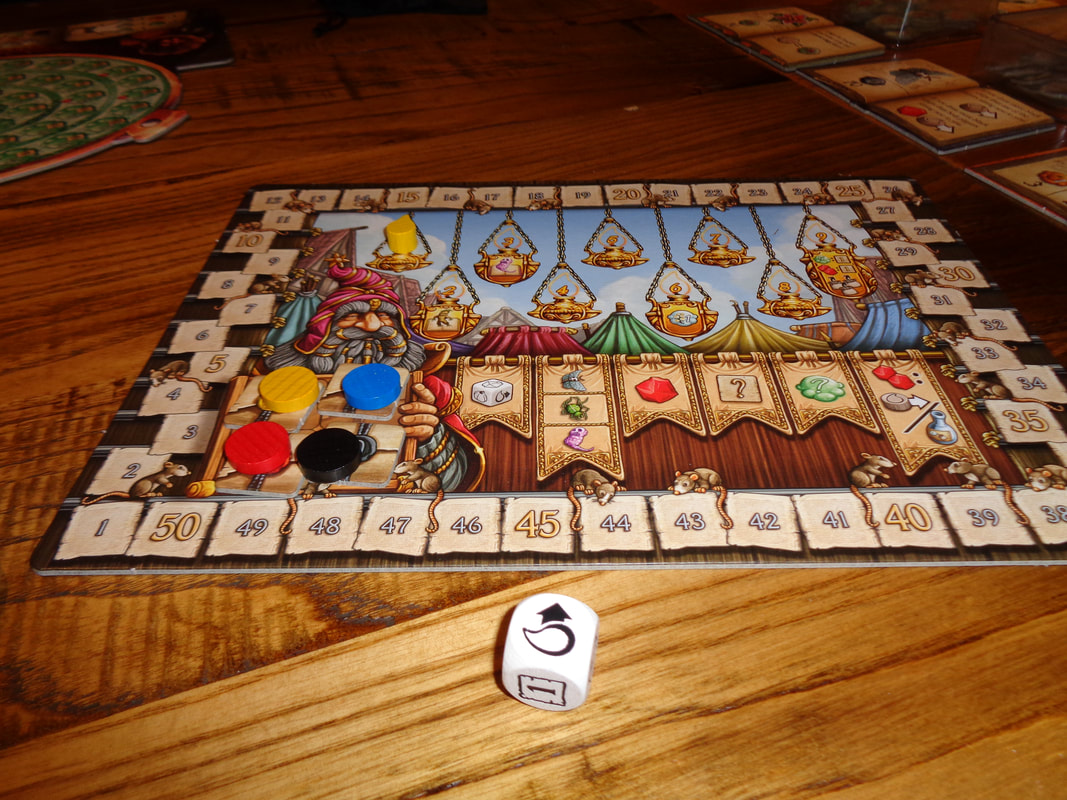
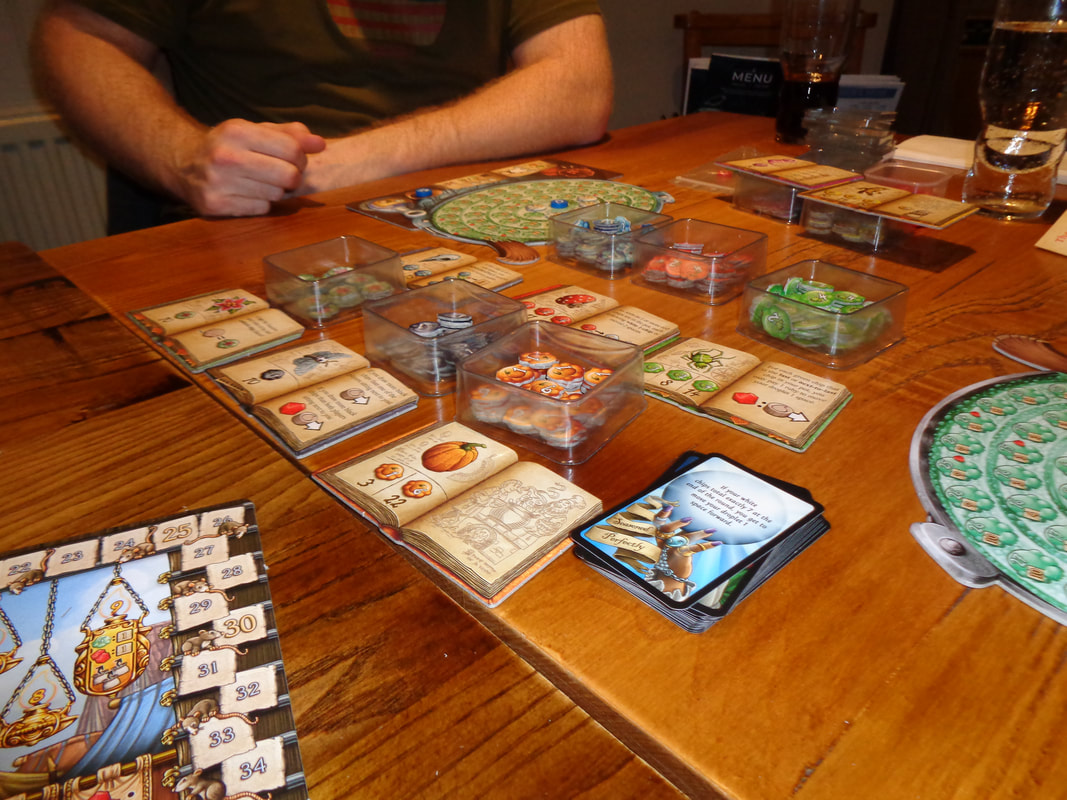
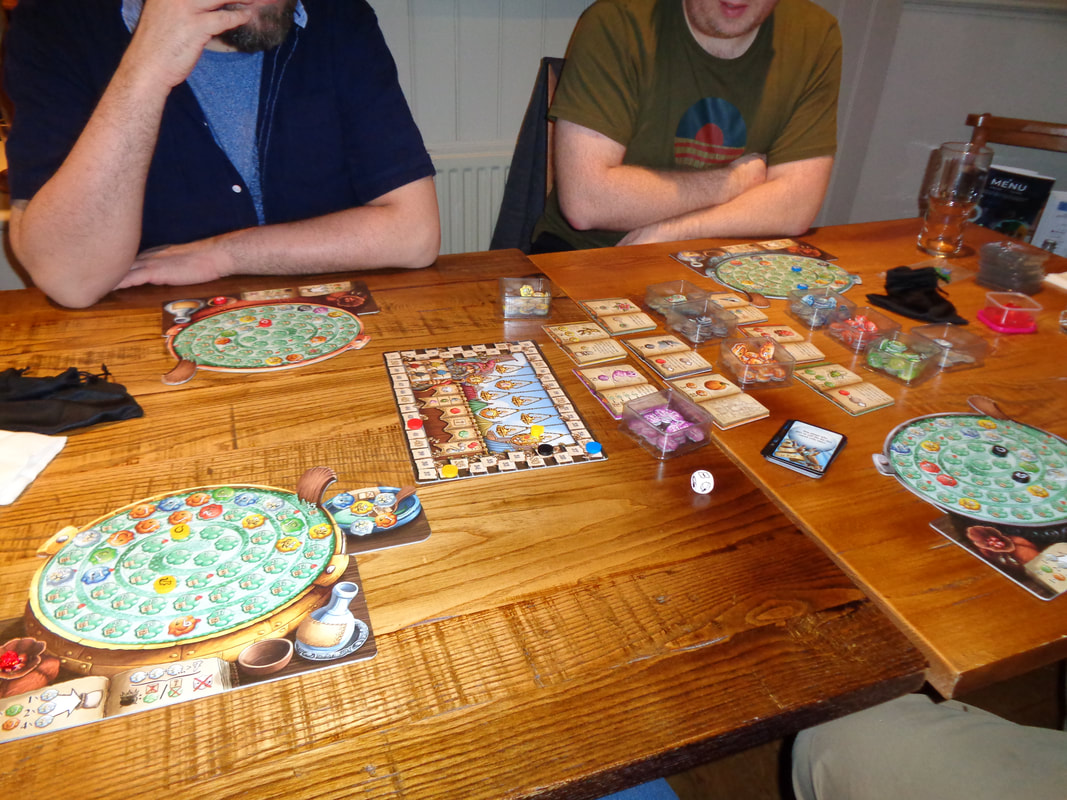
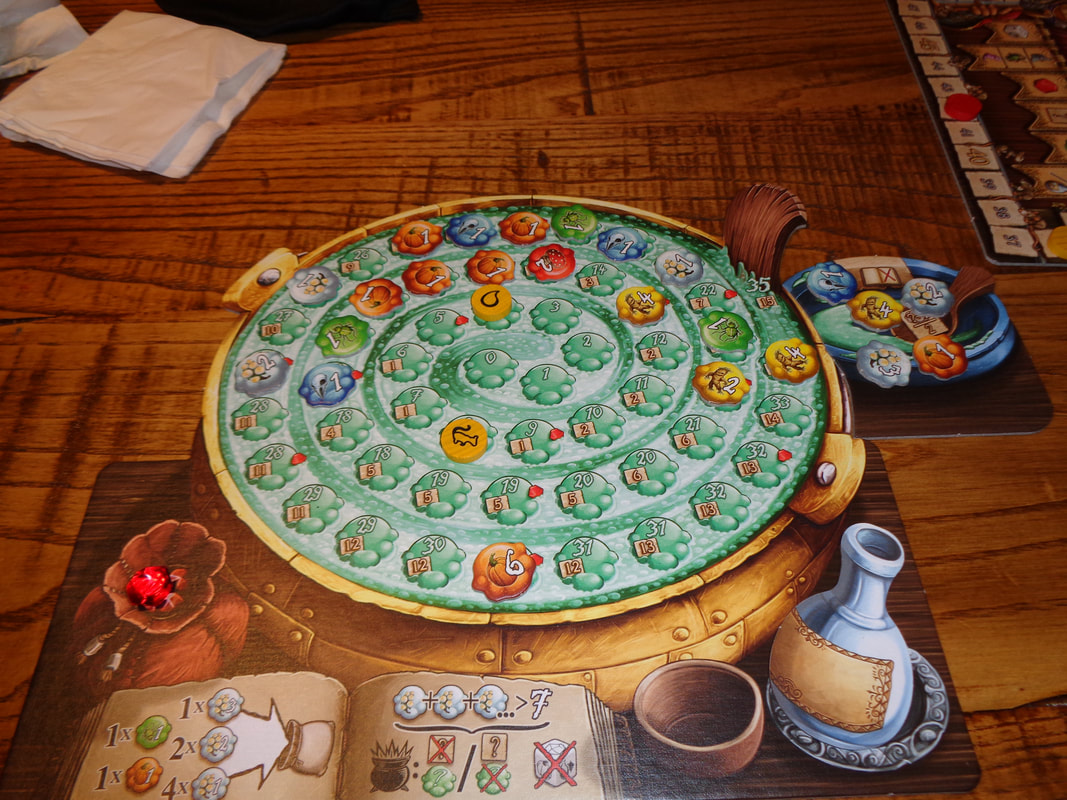
 RSS Feed
RSS Feed
